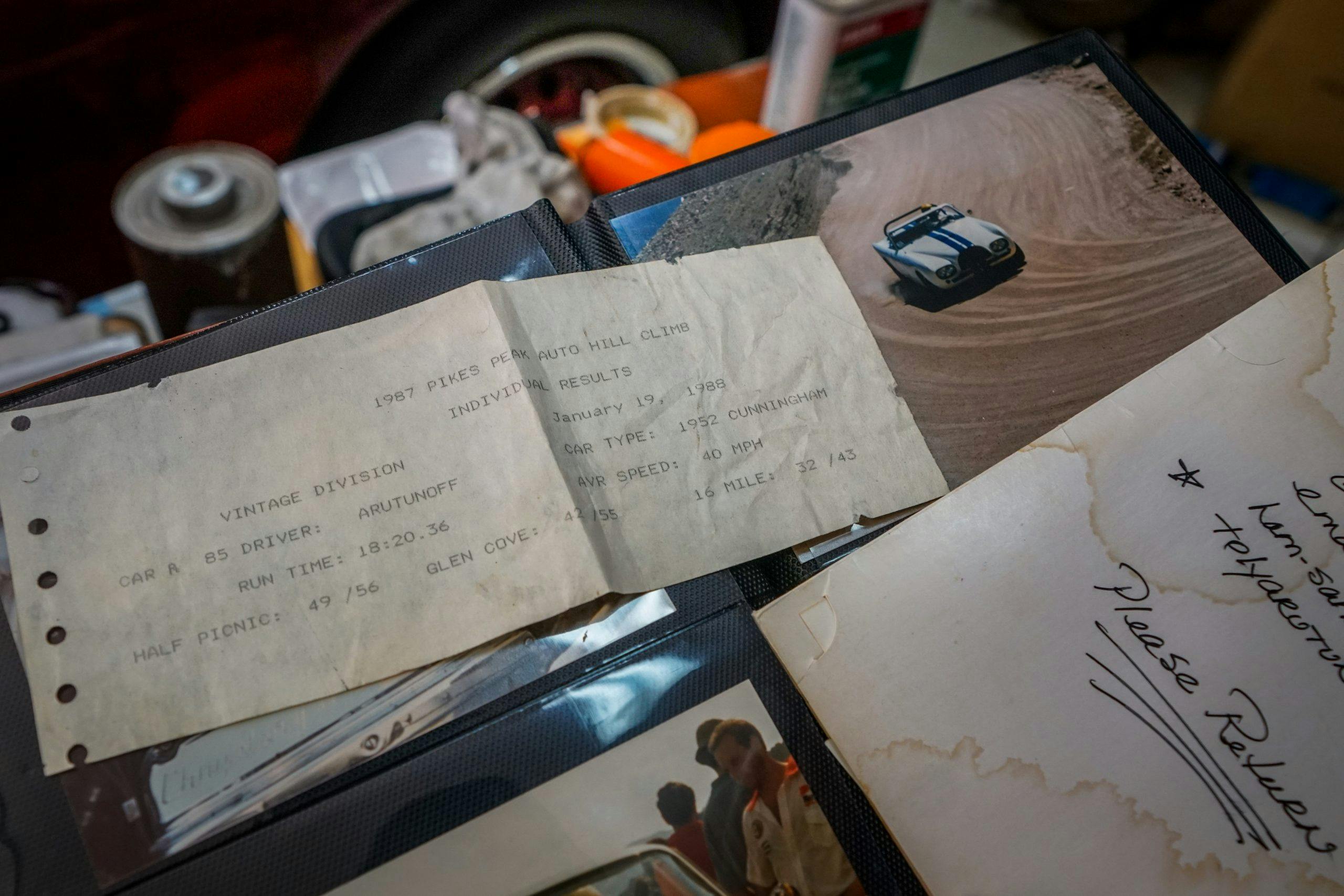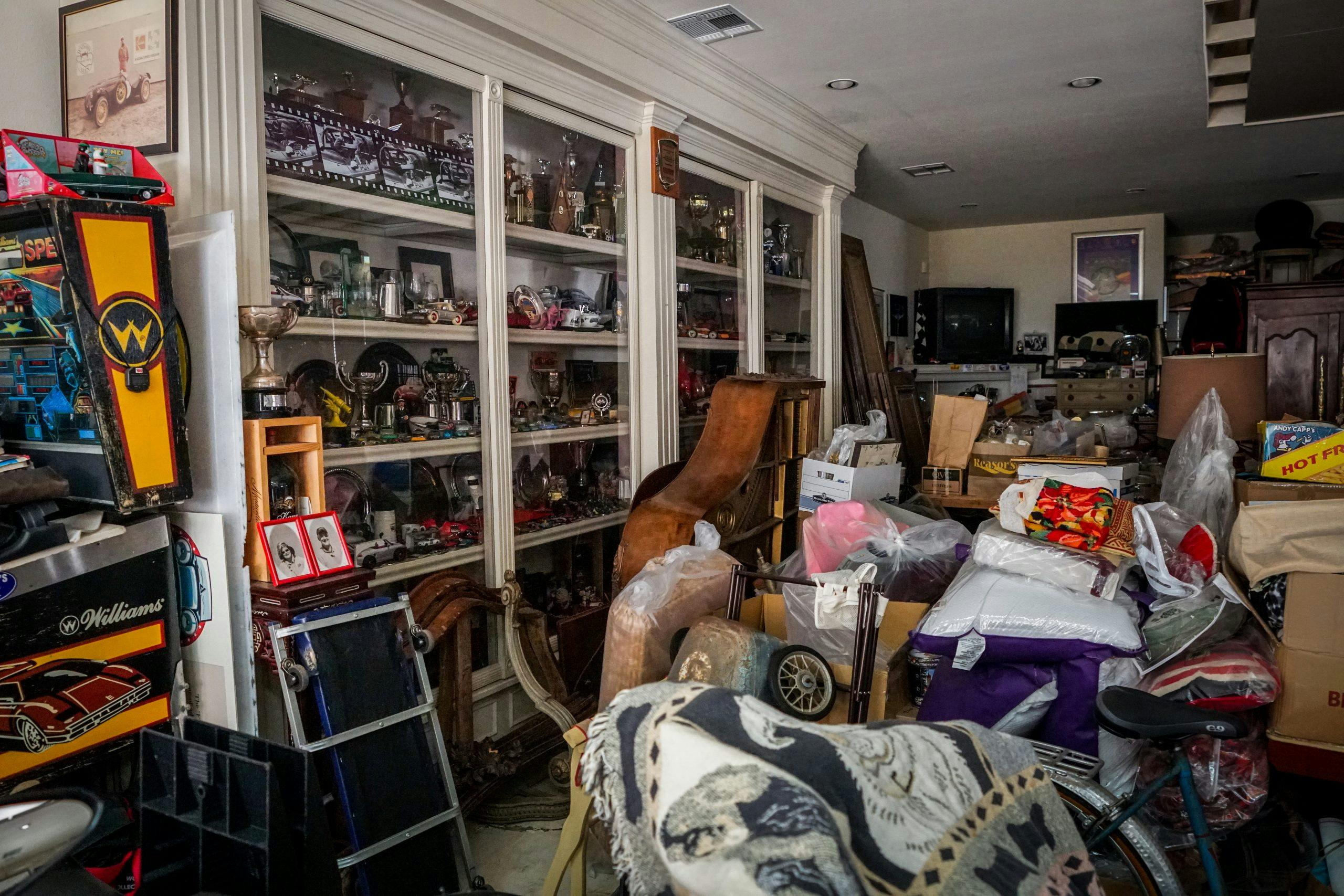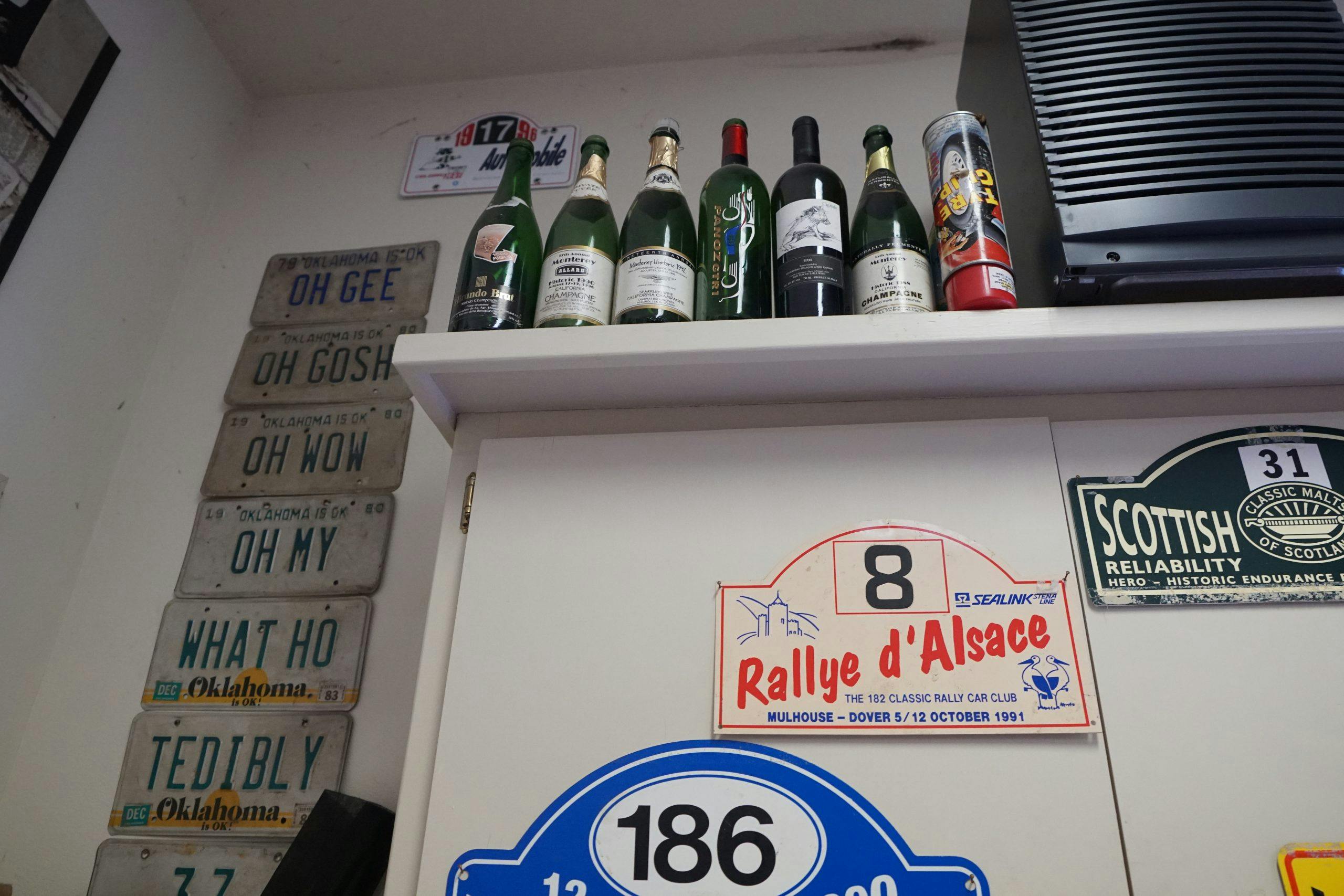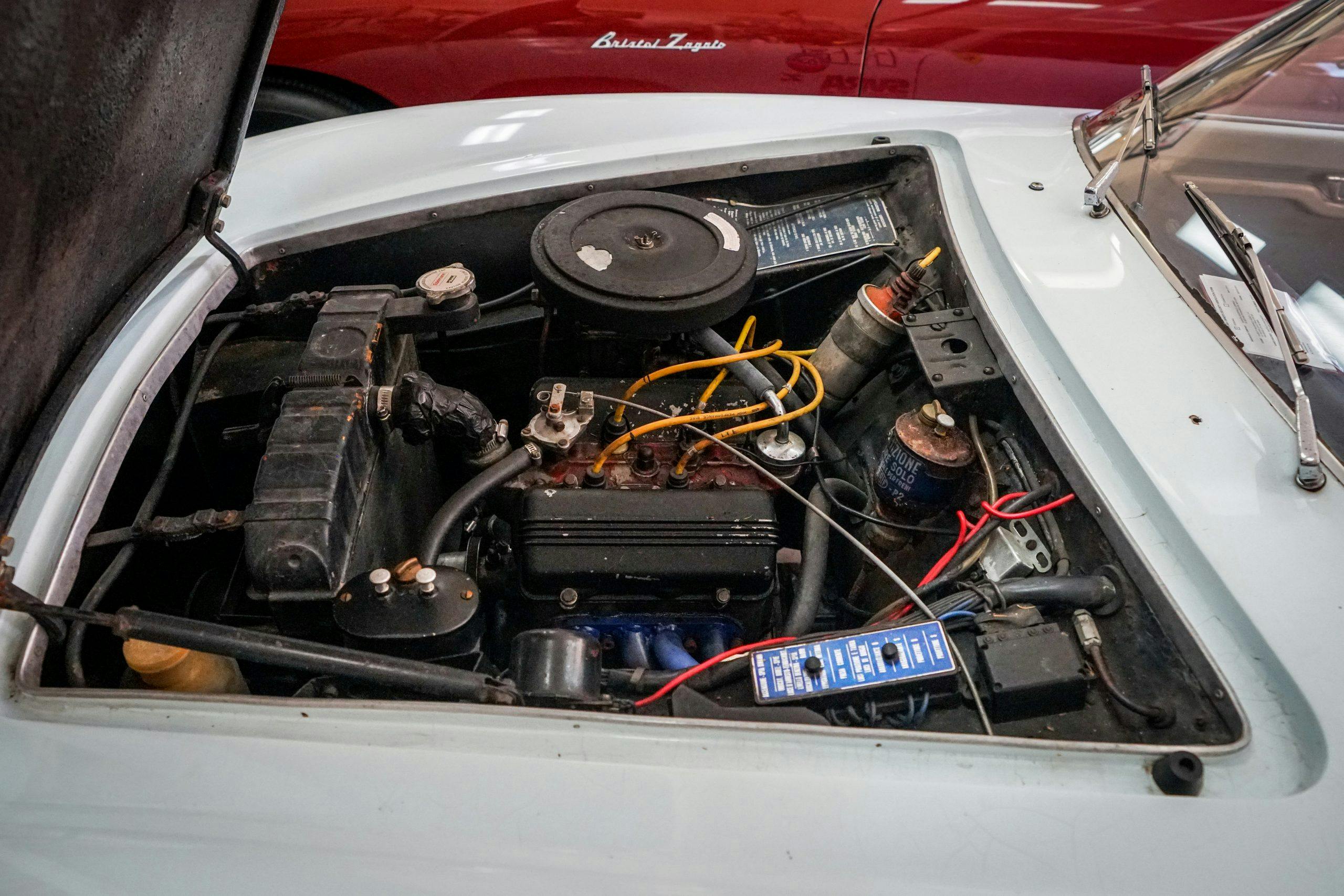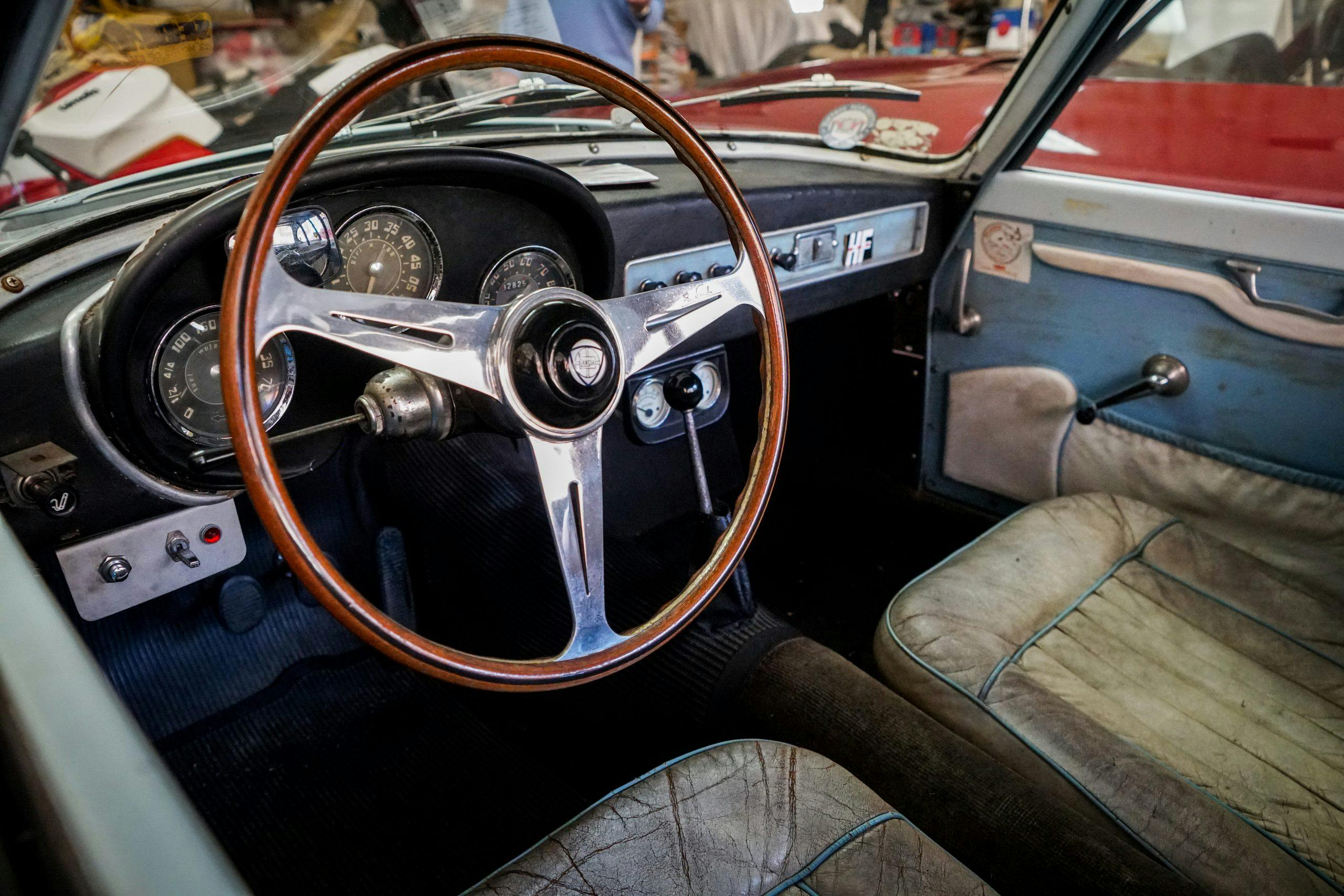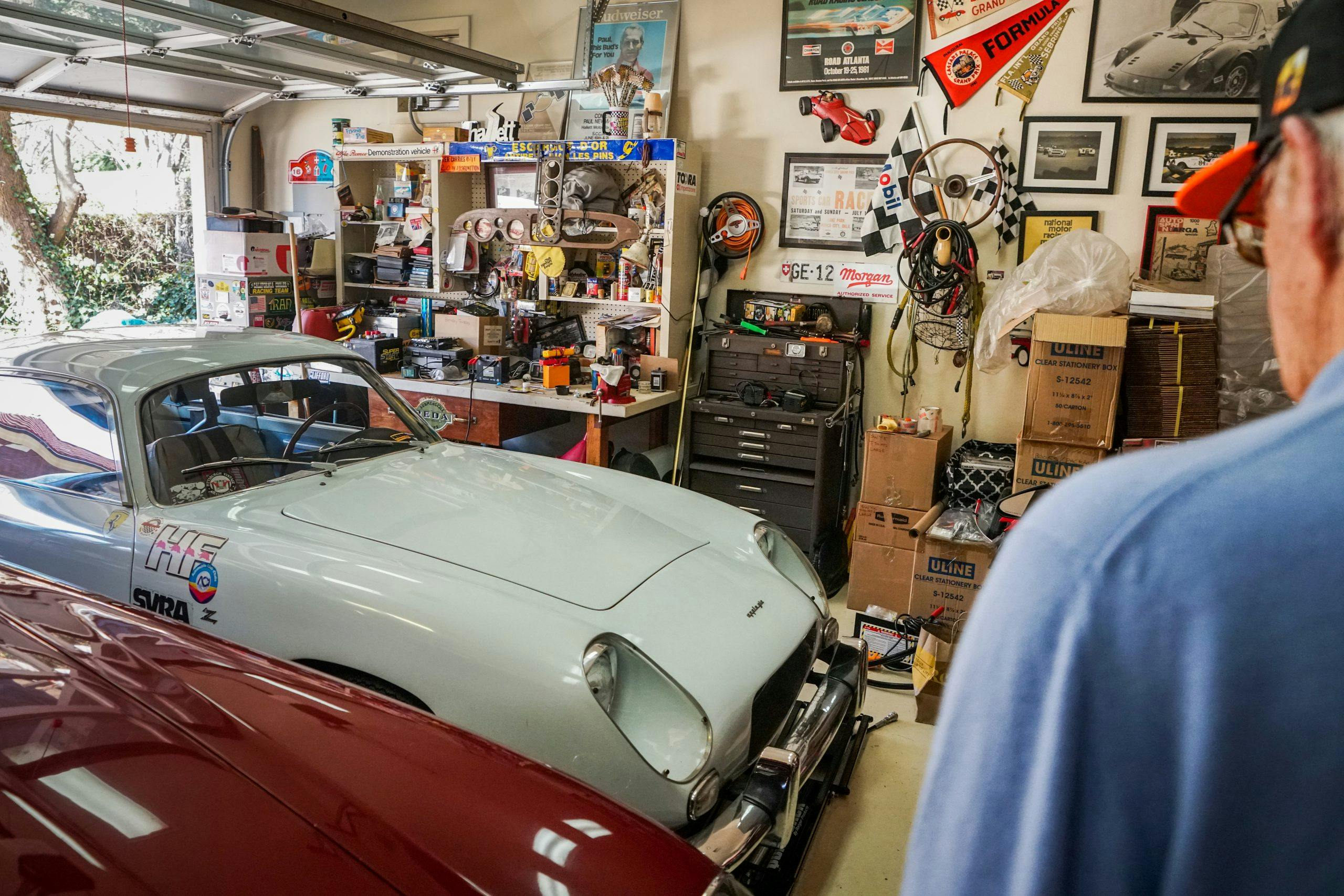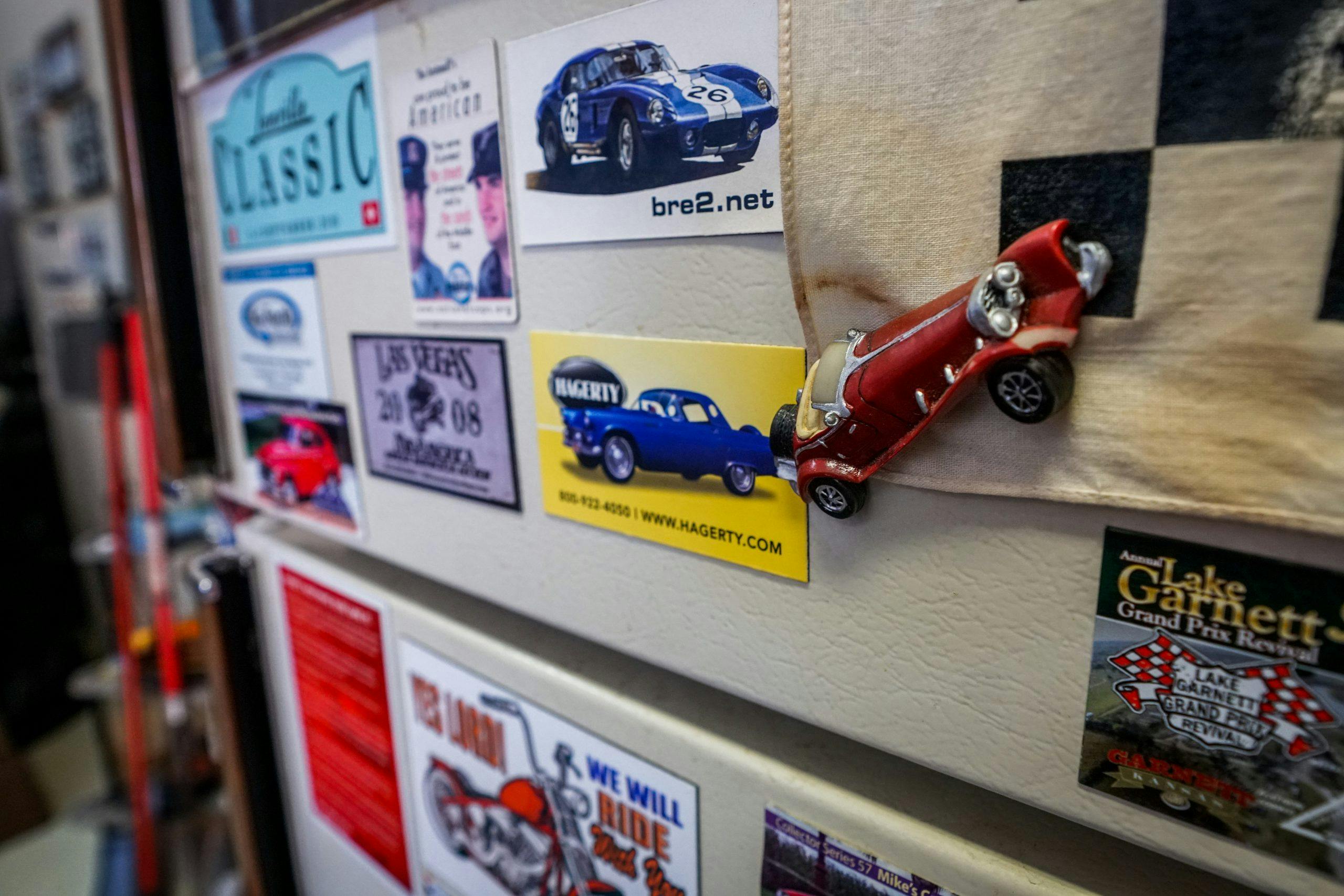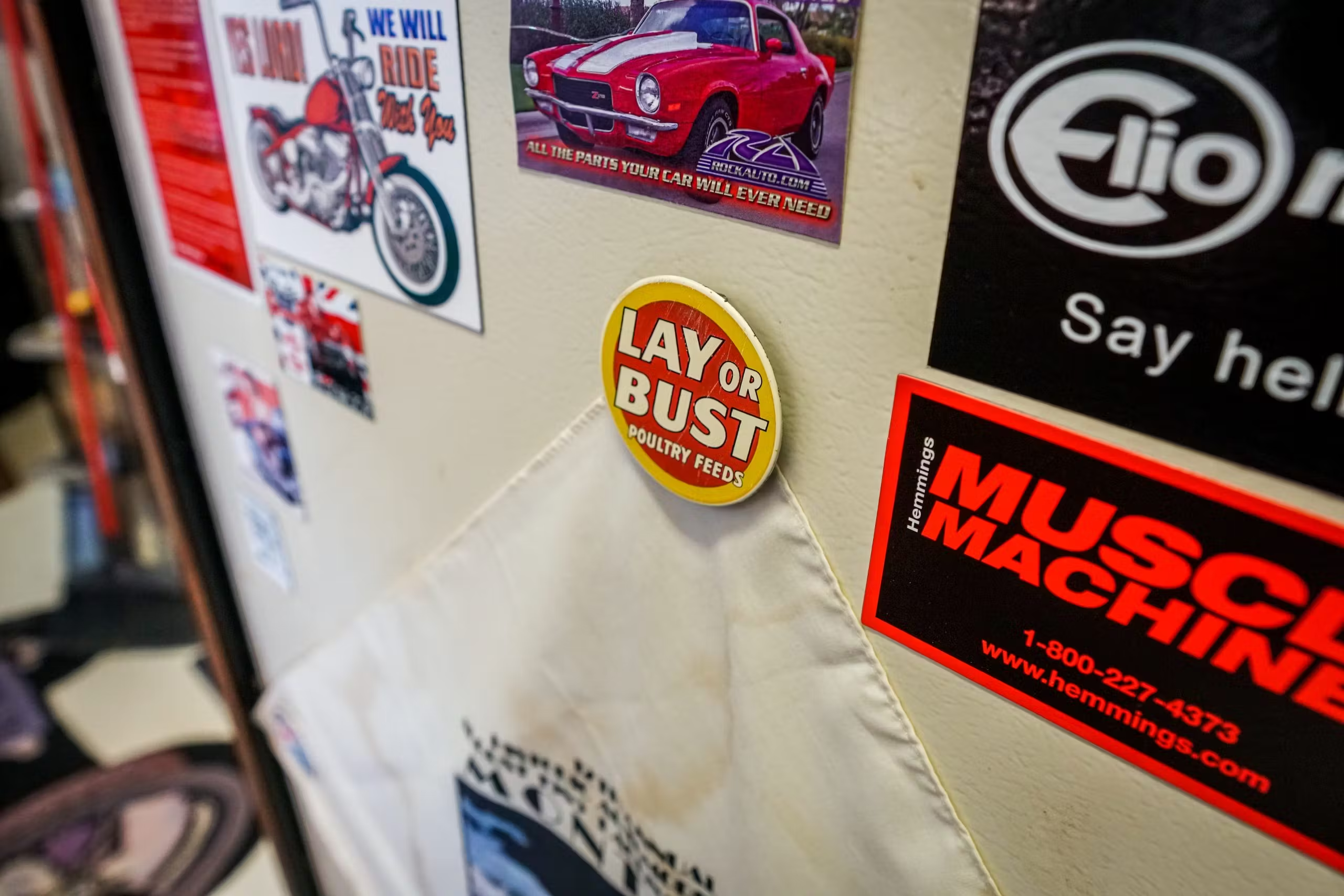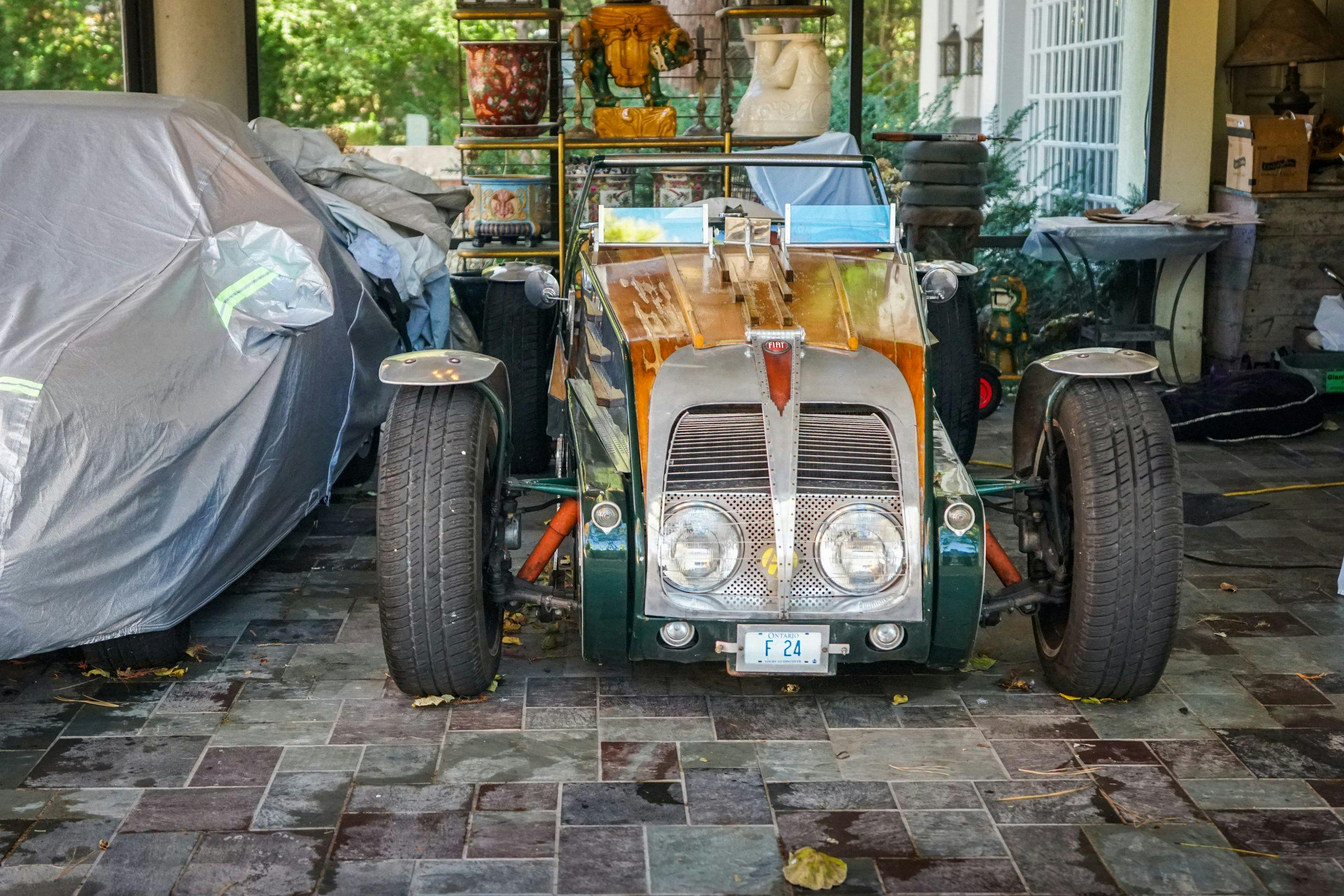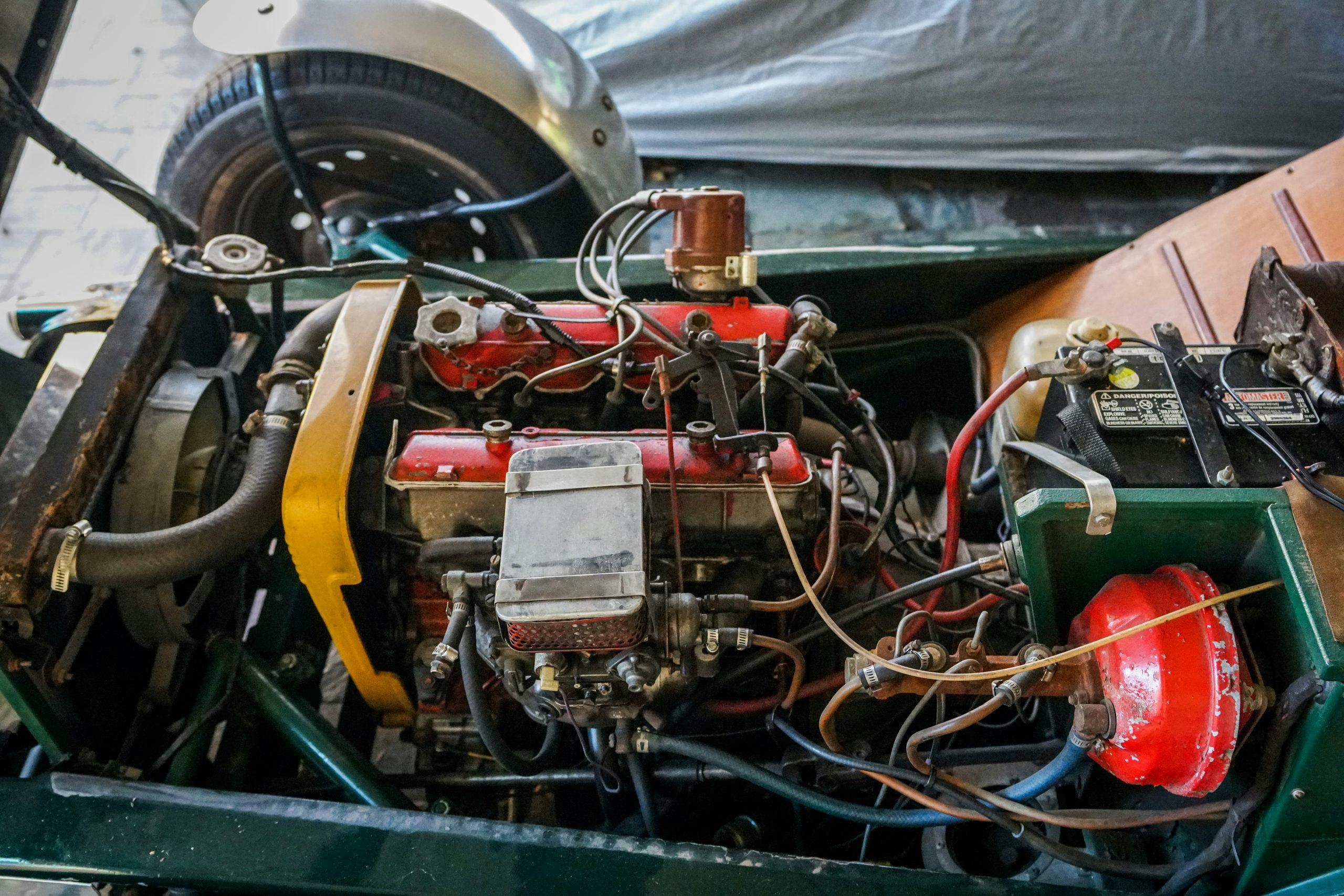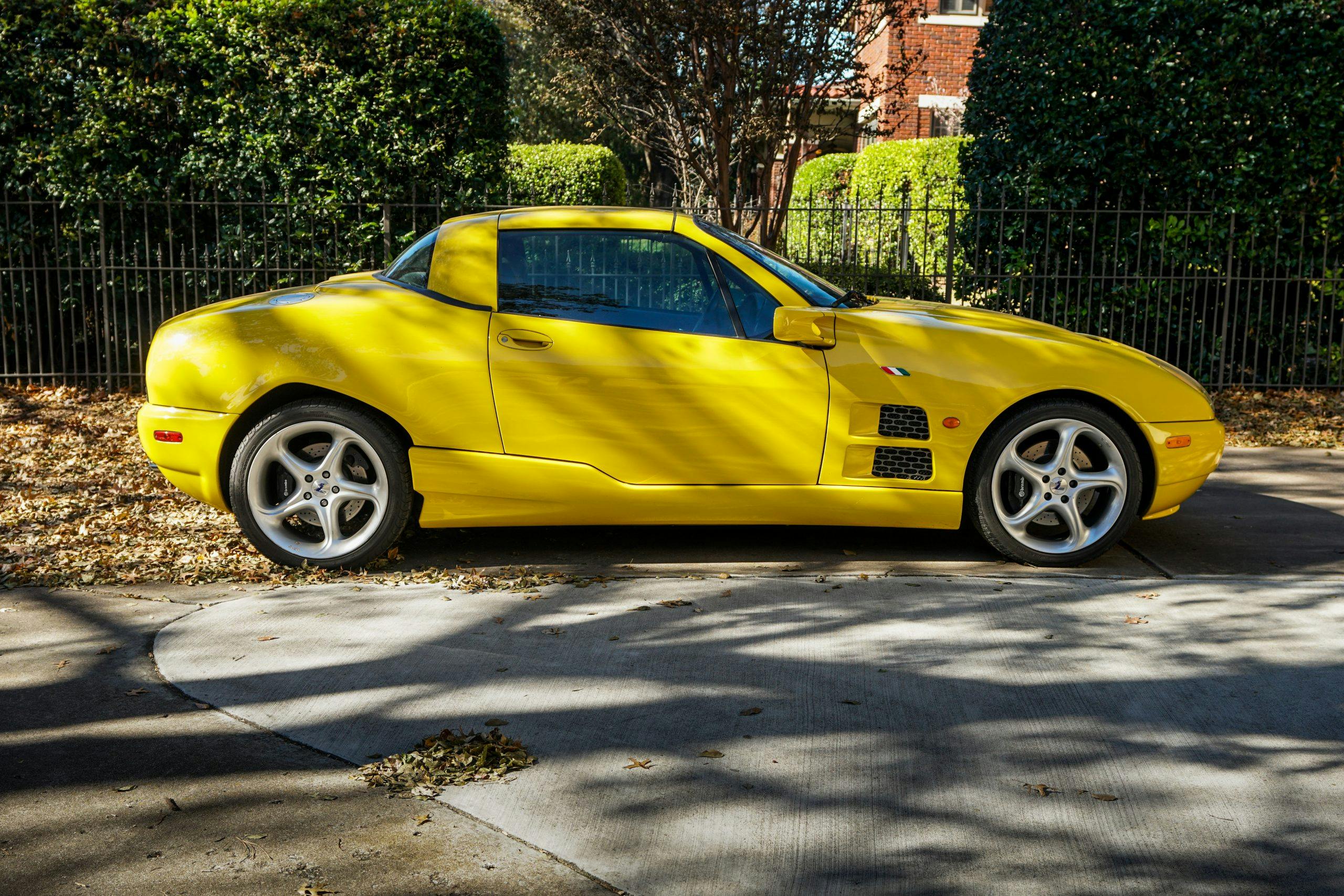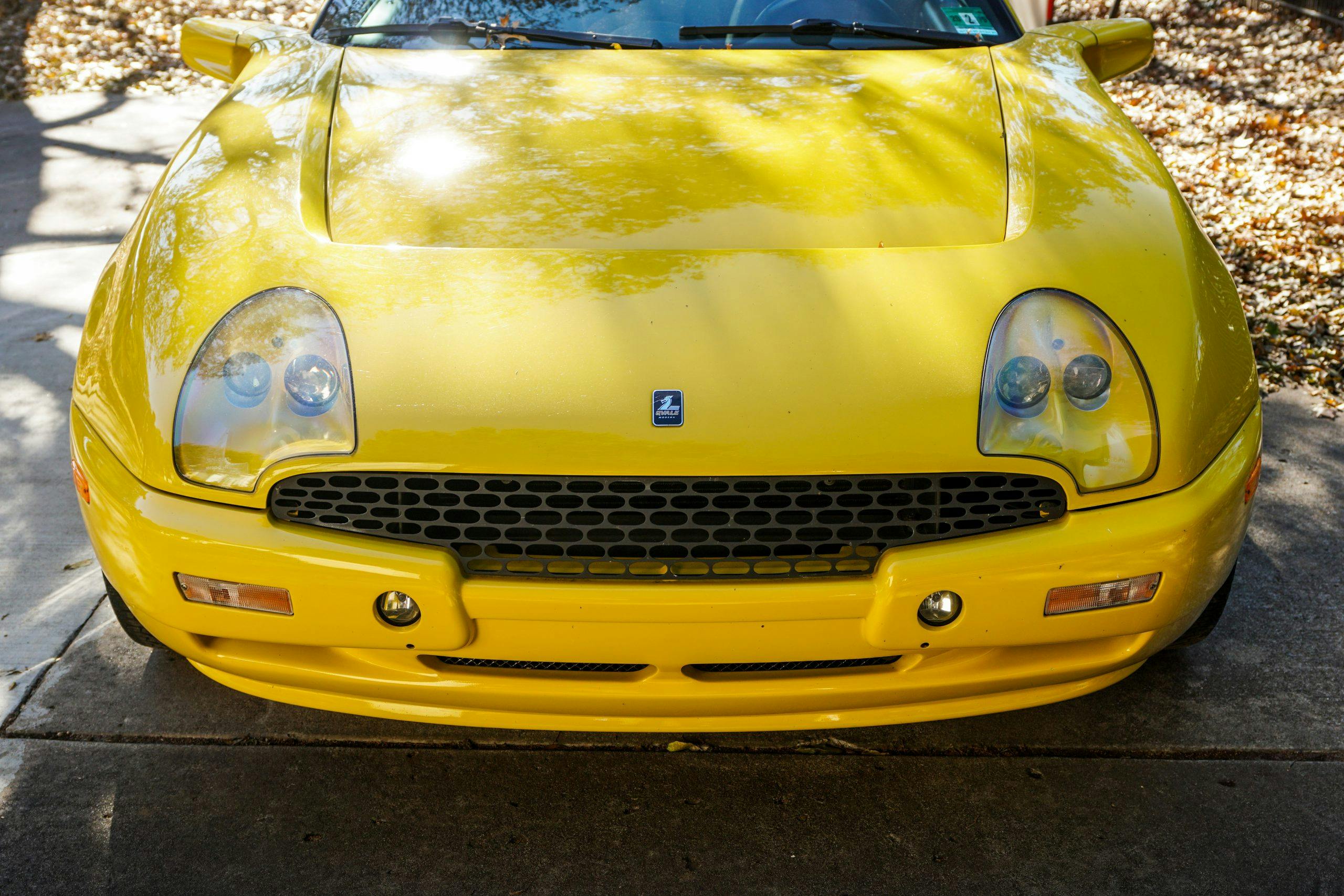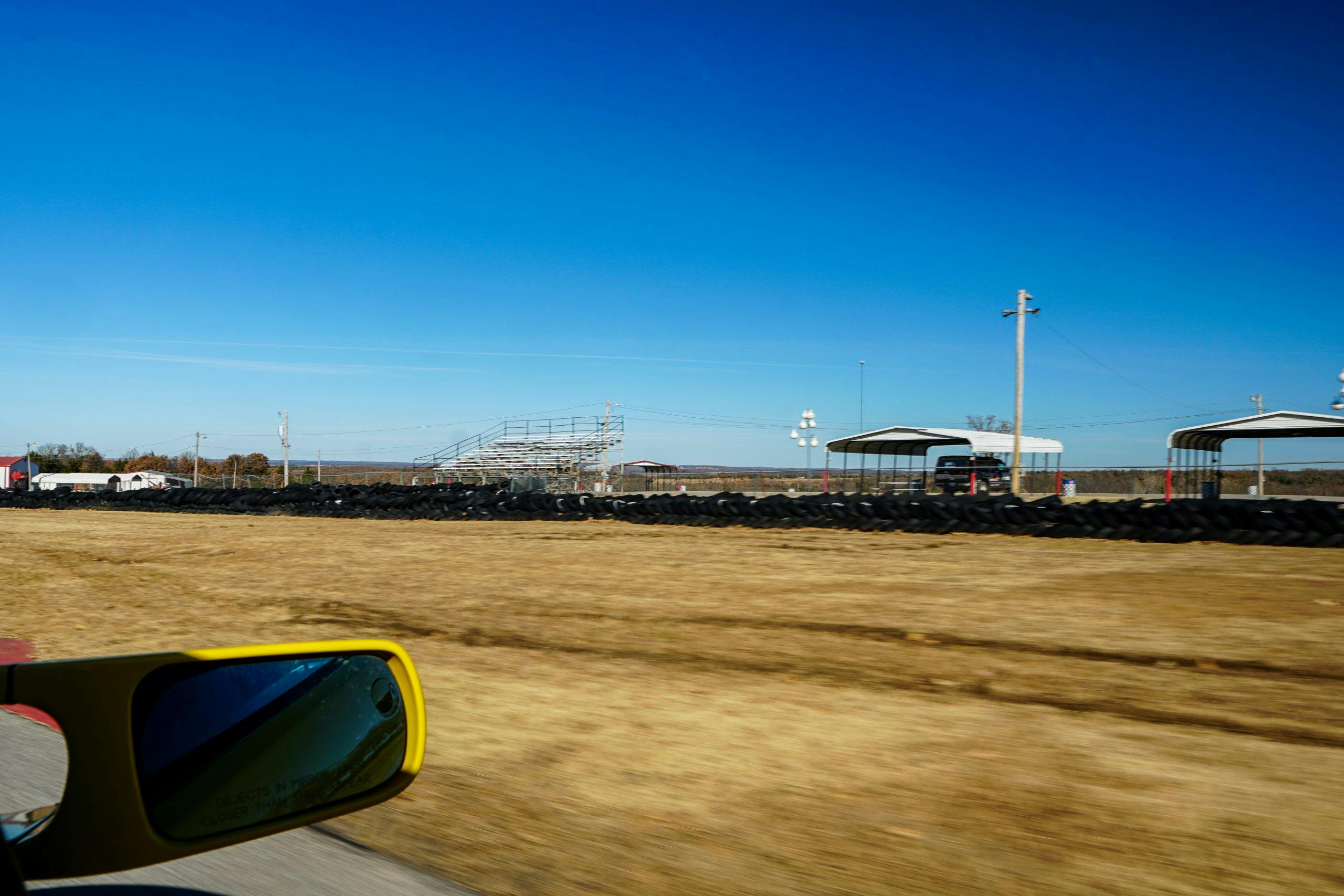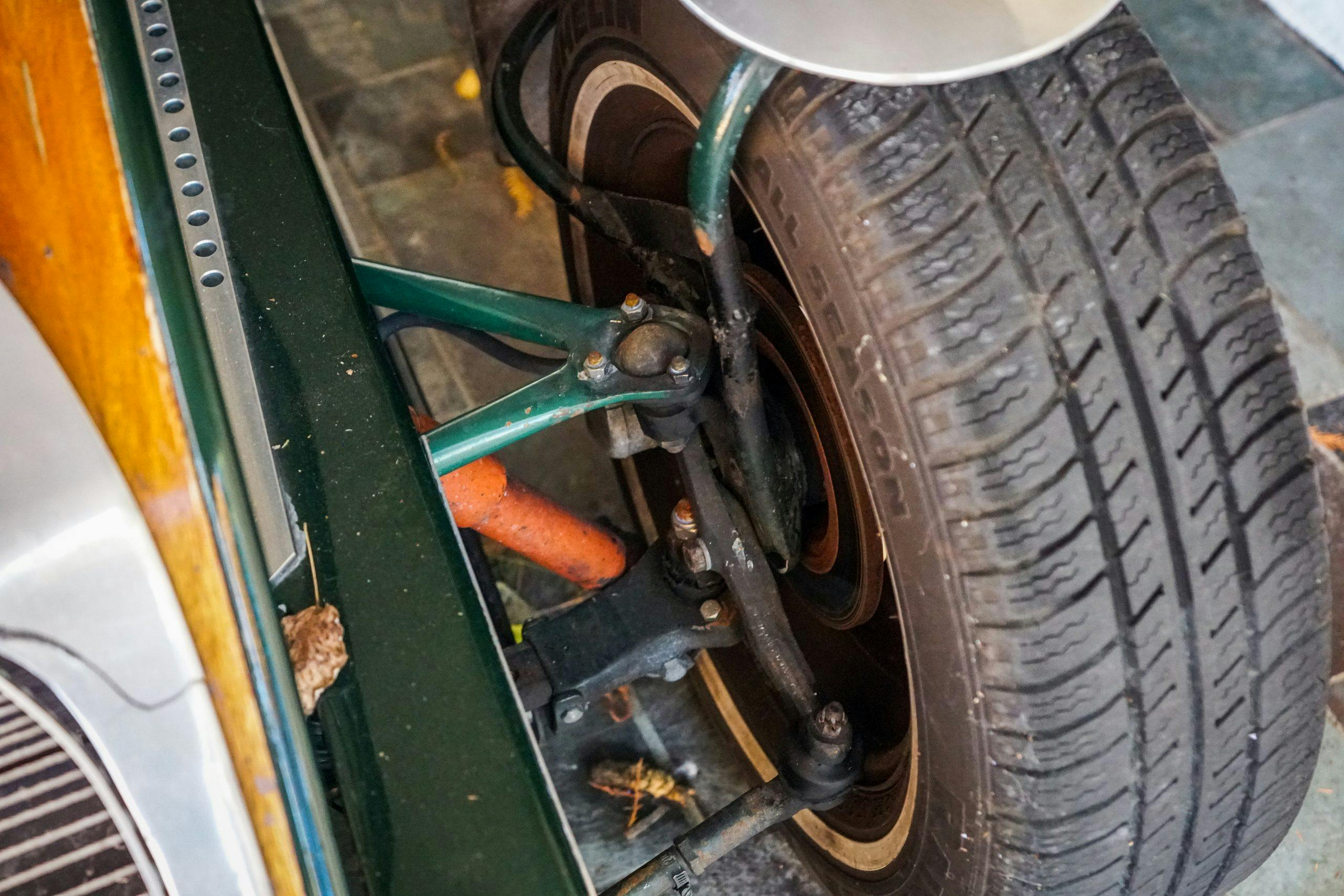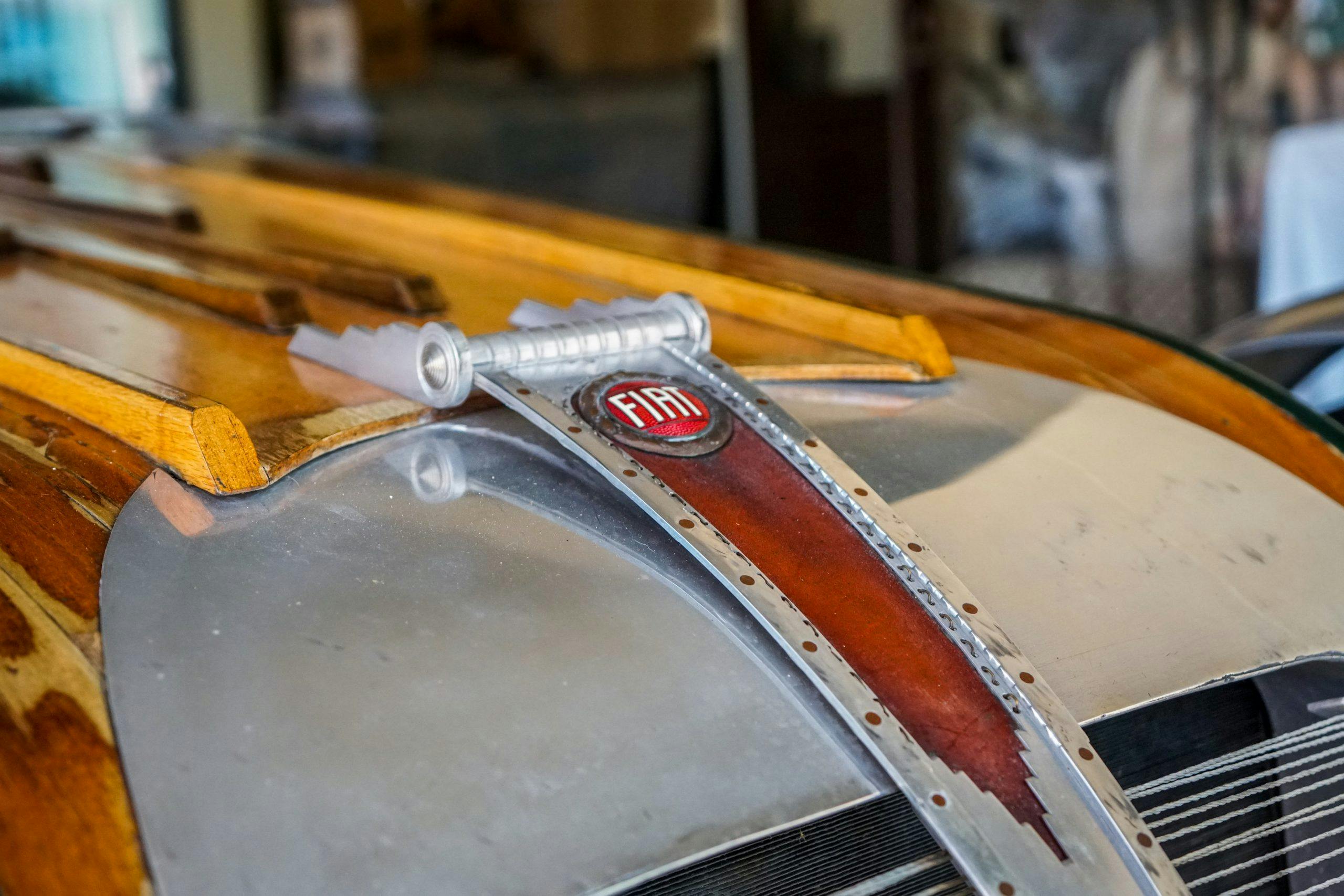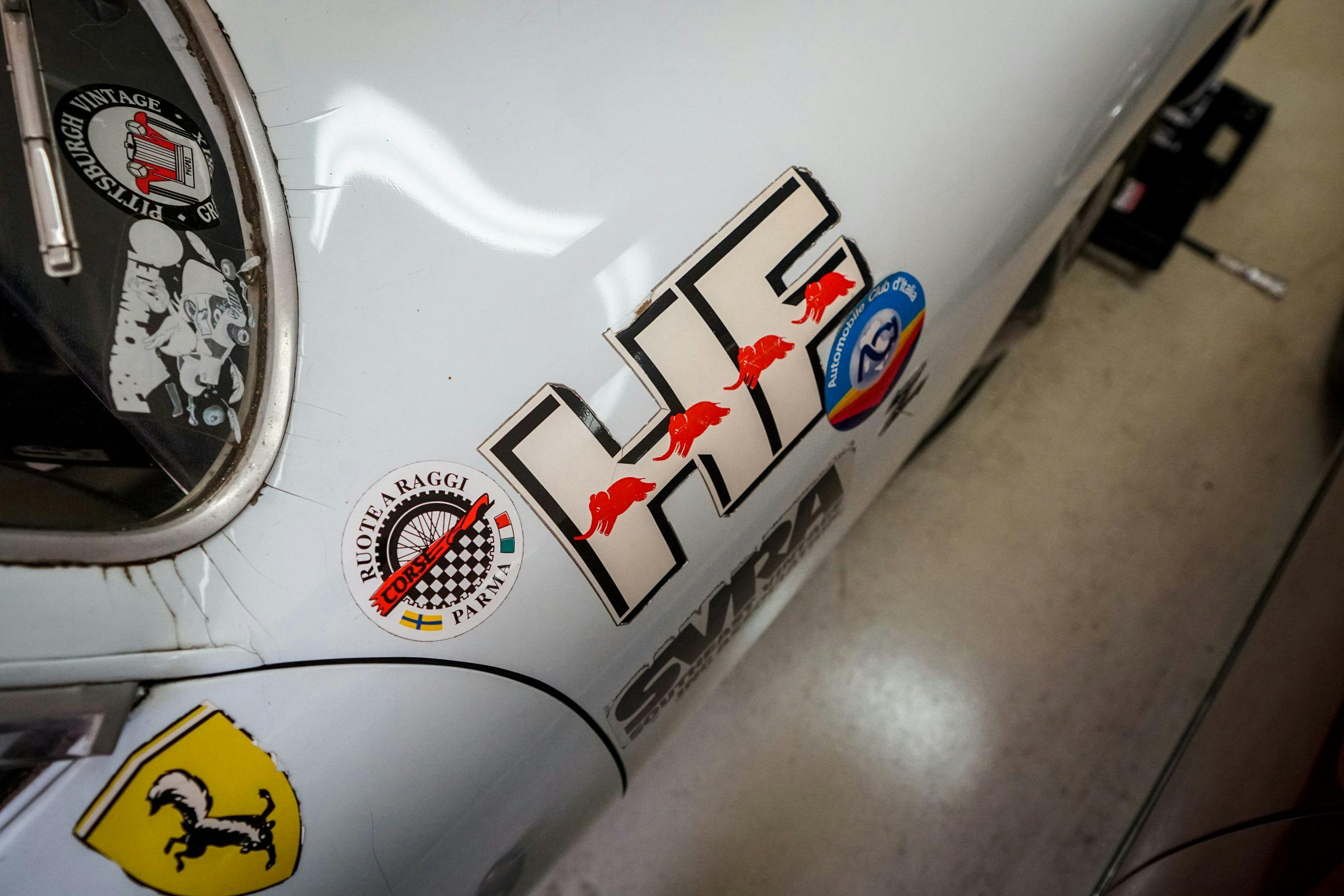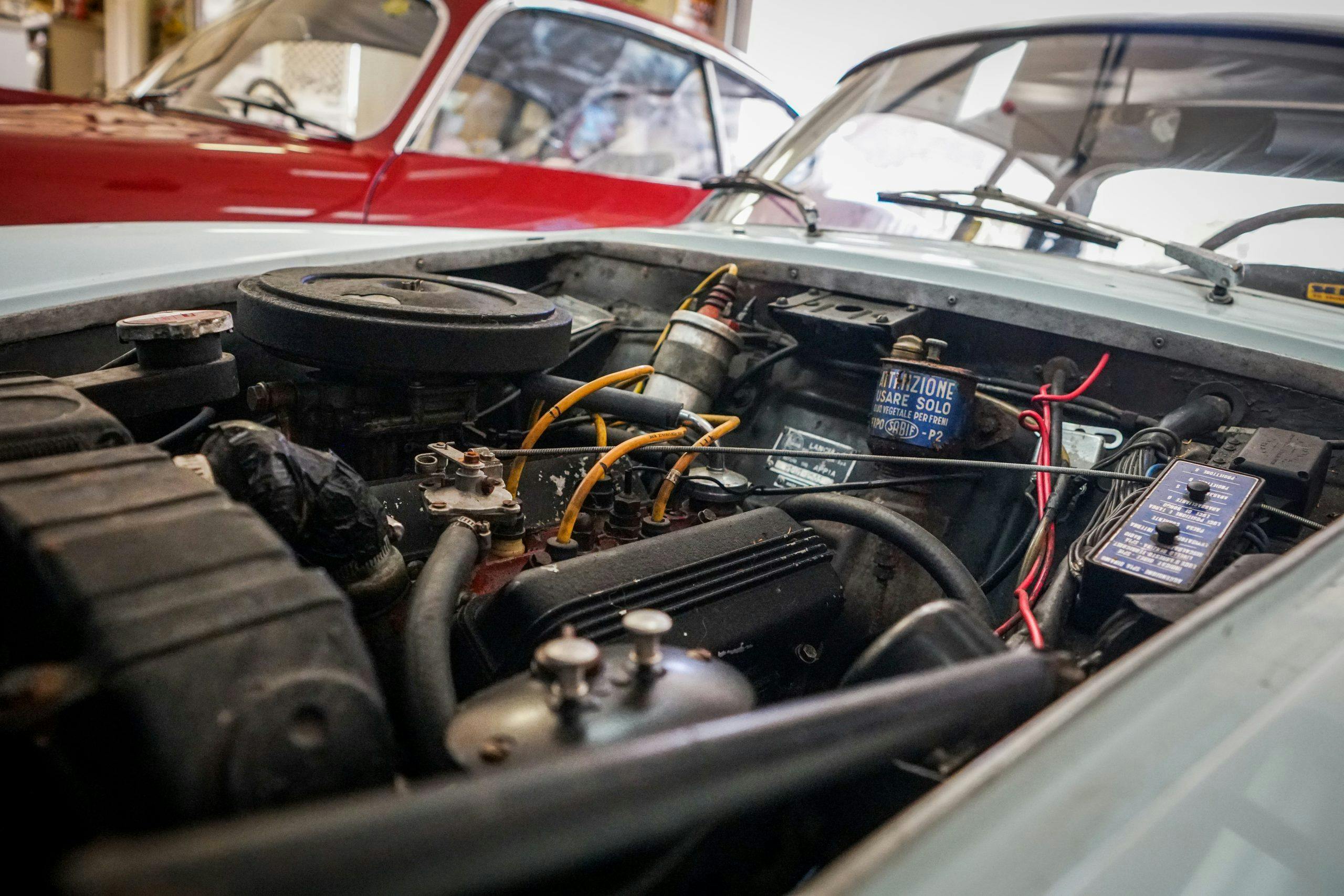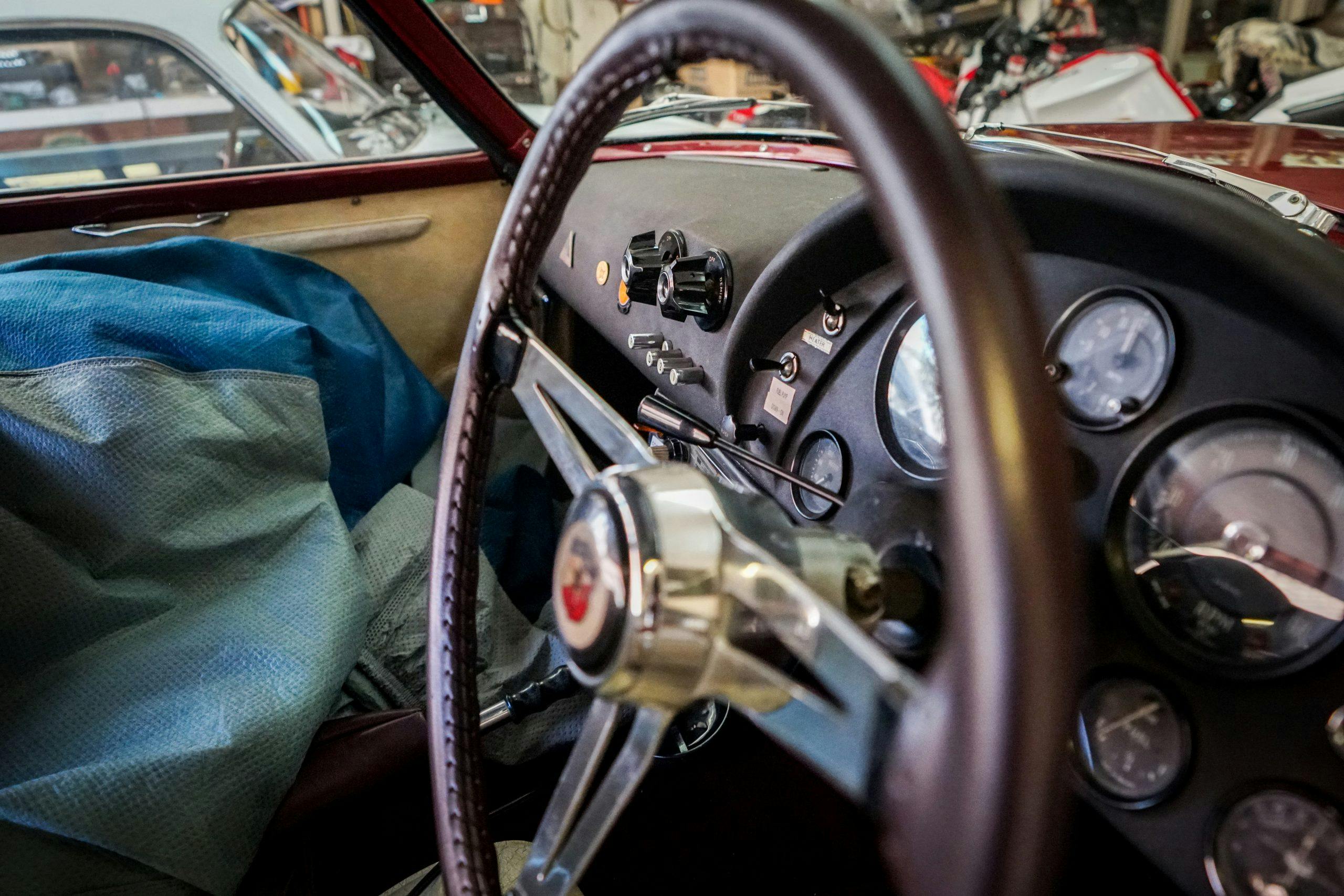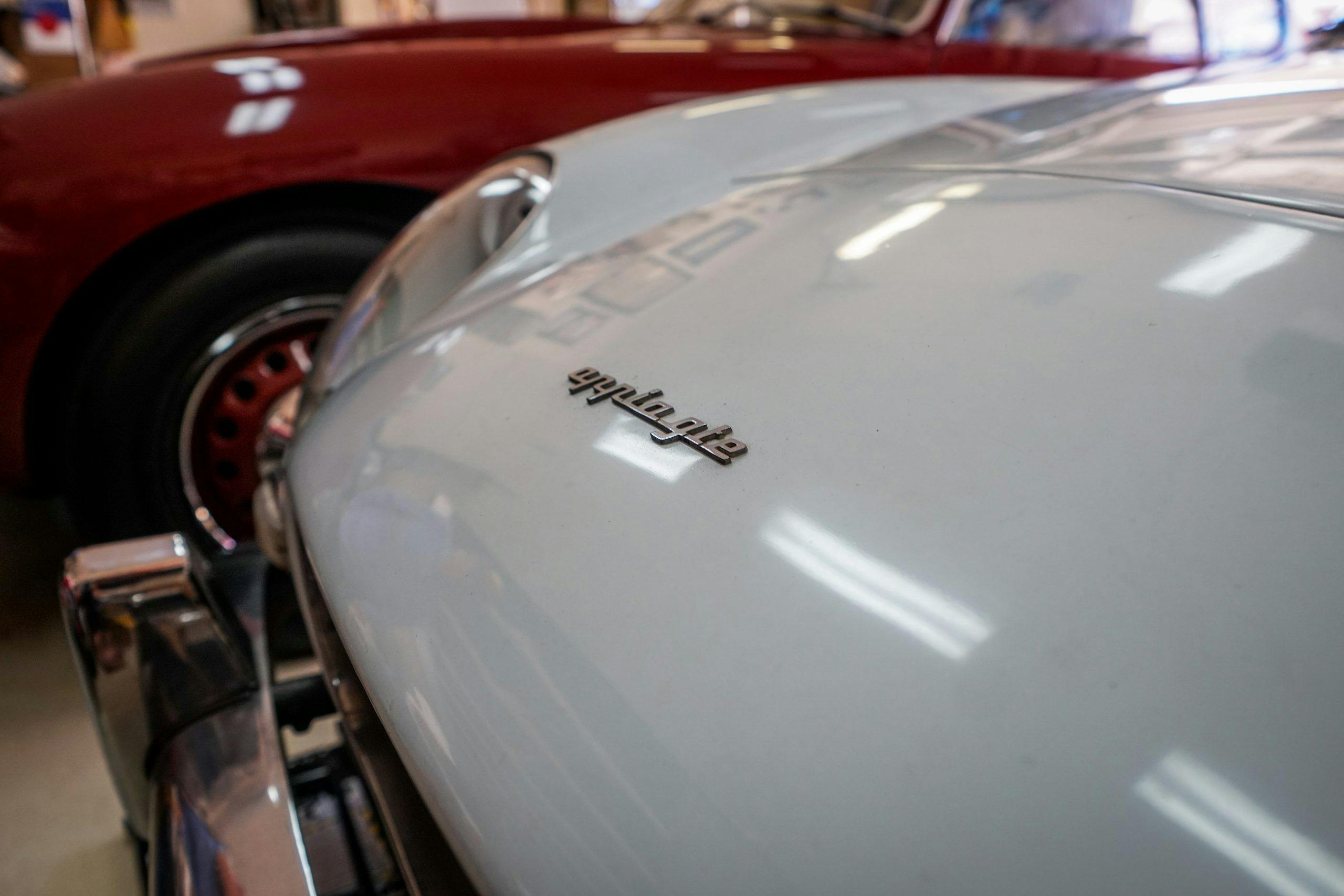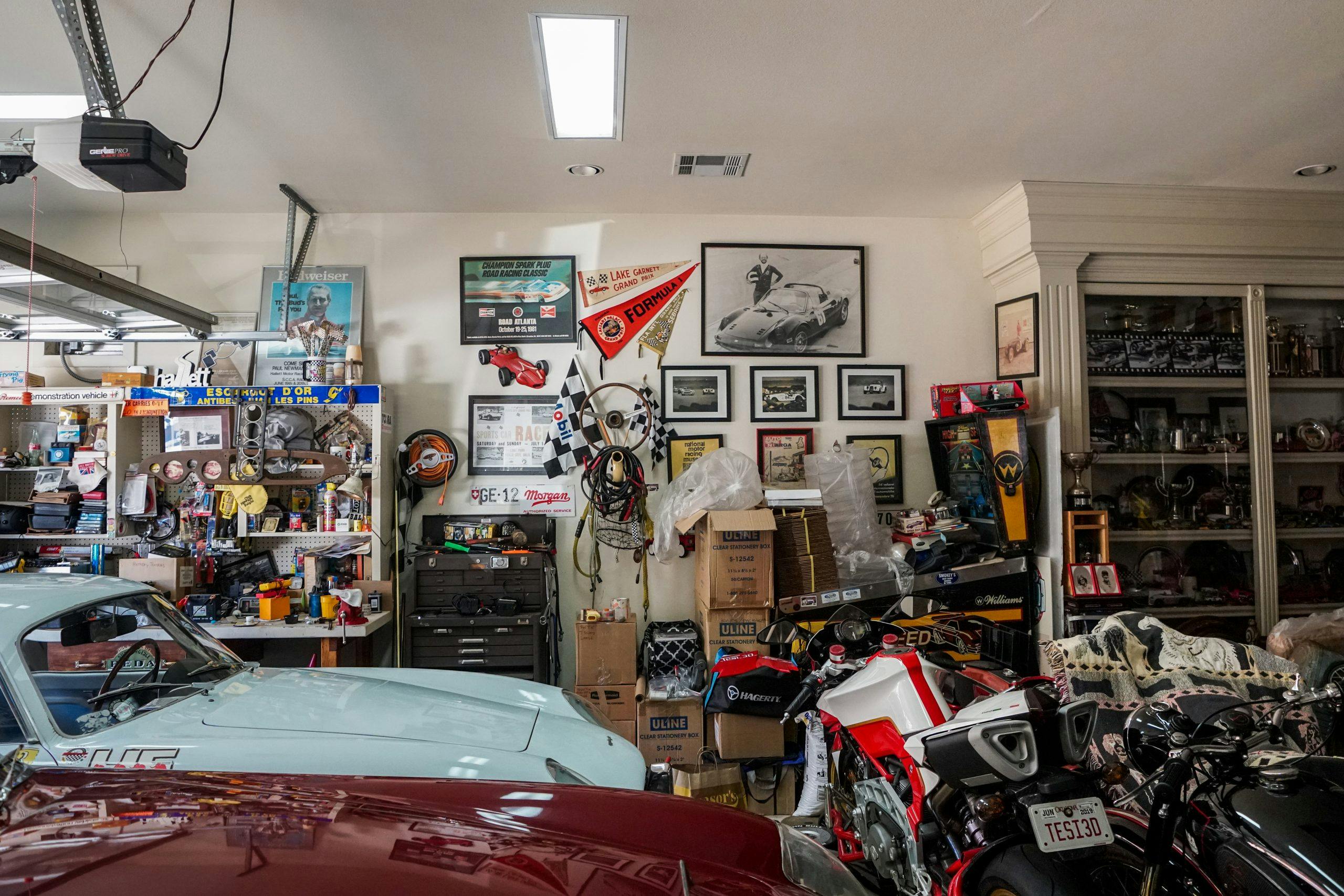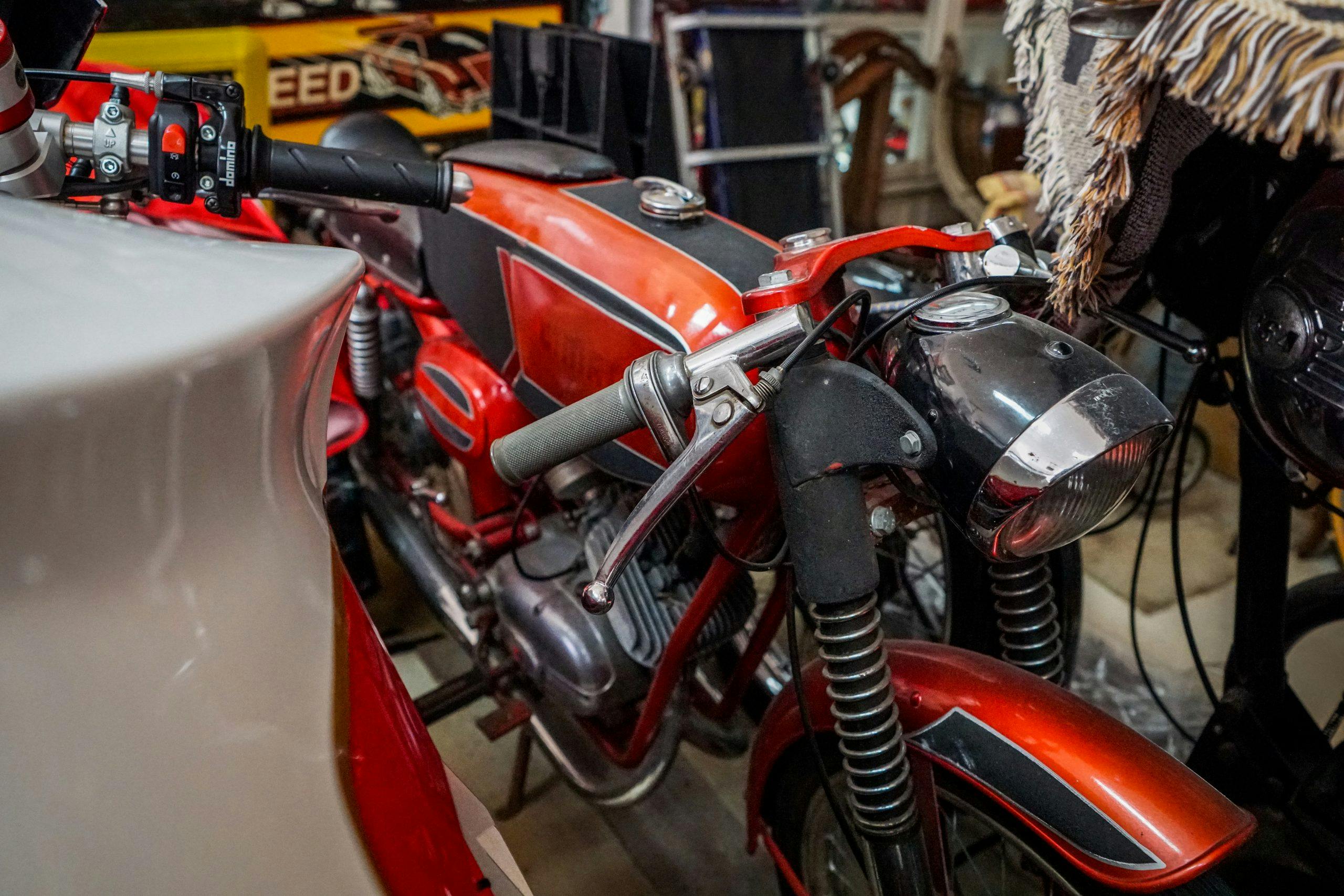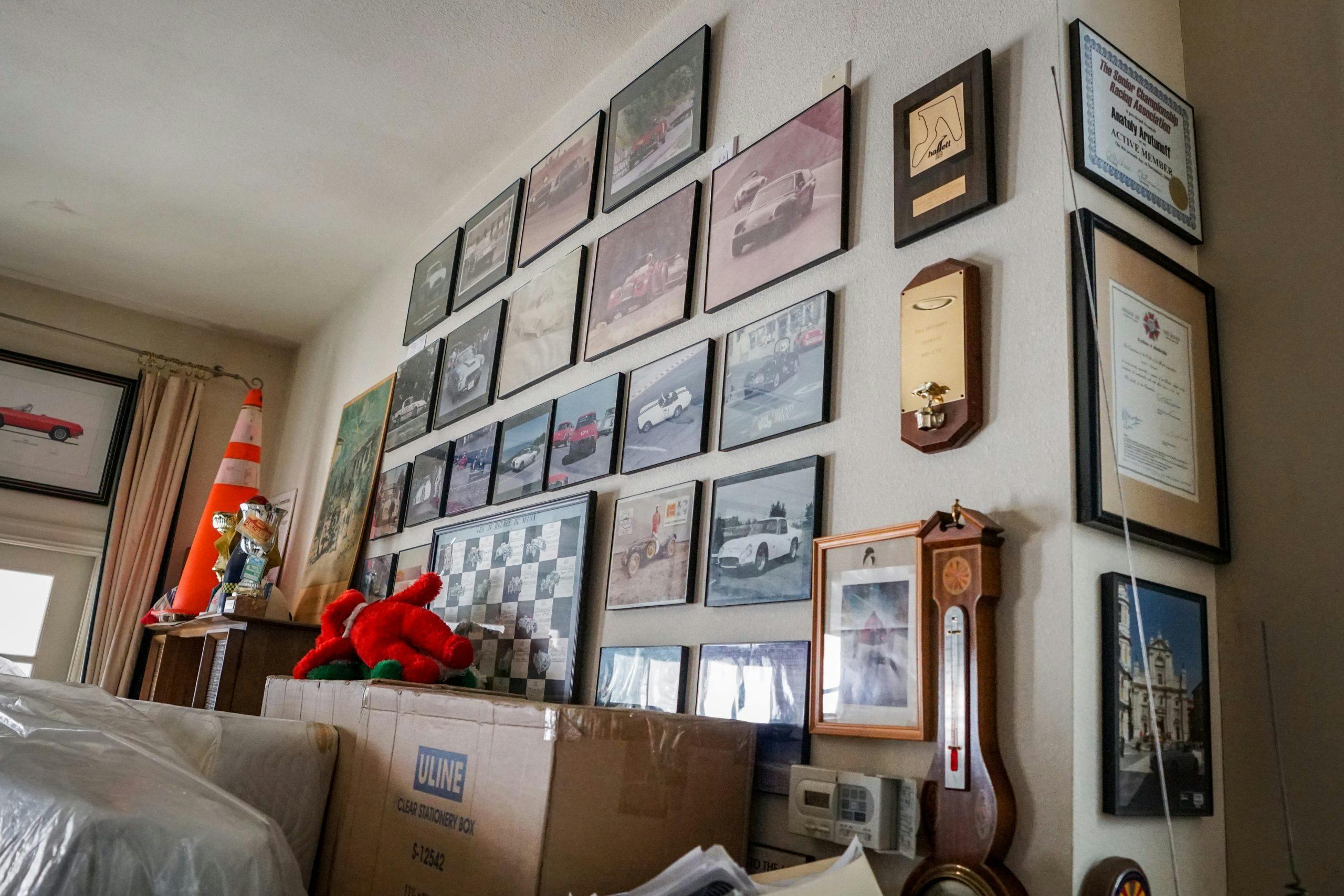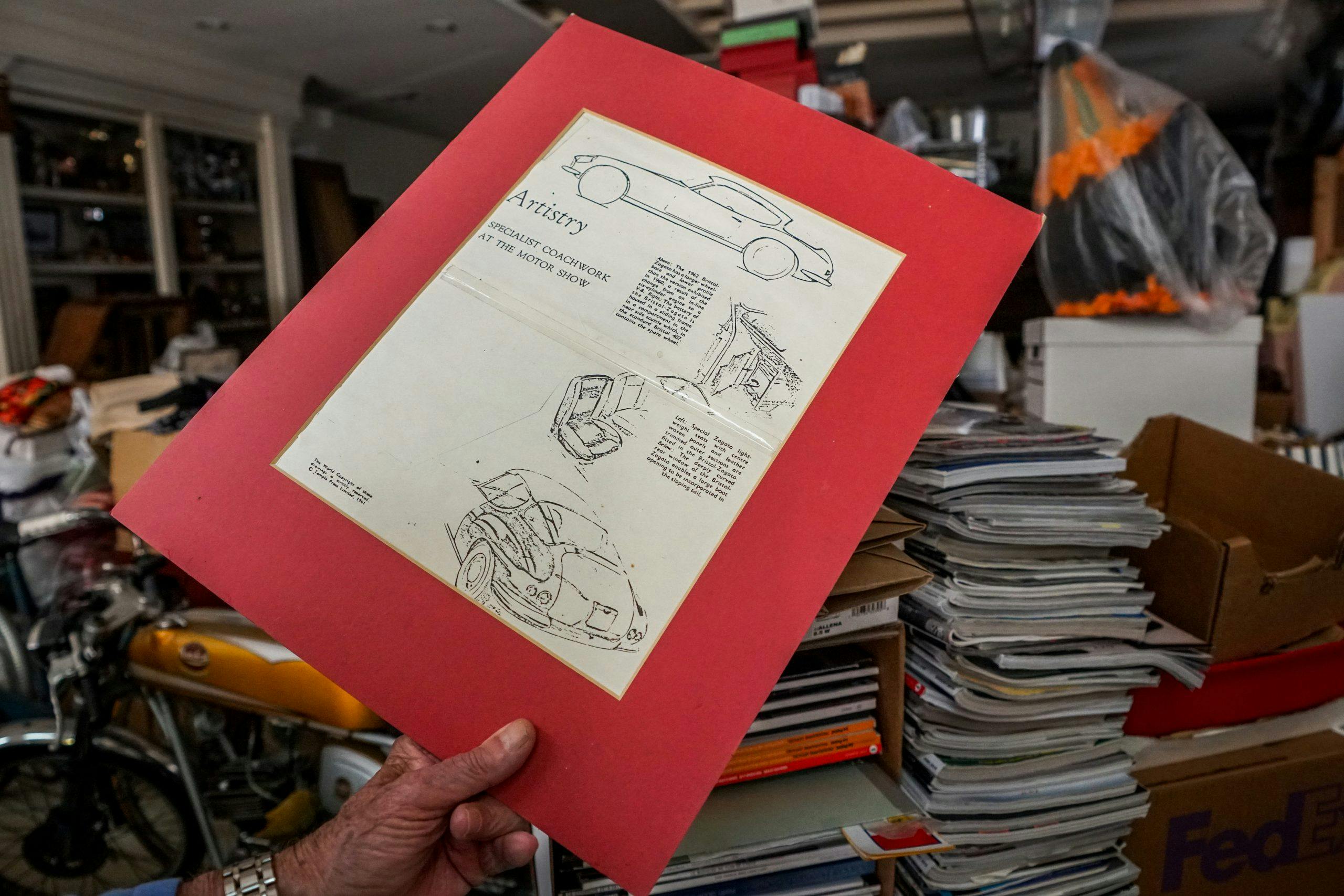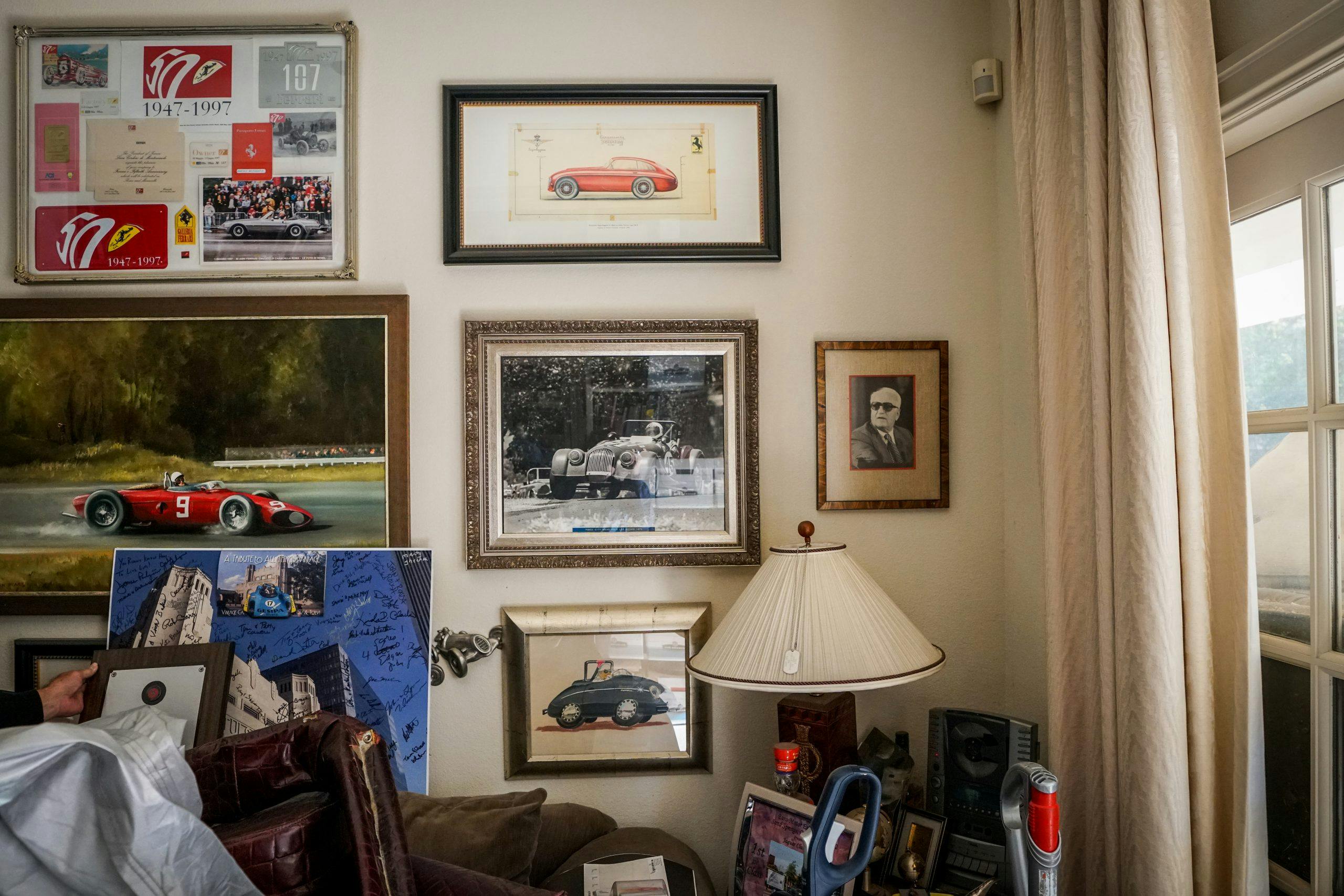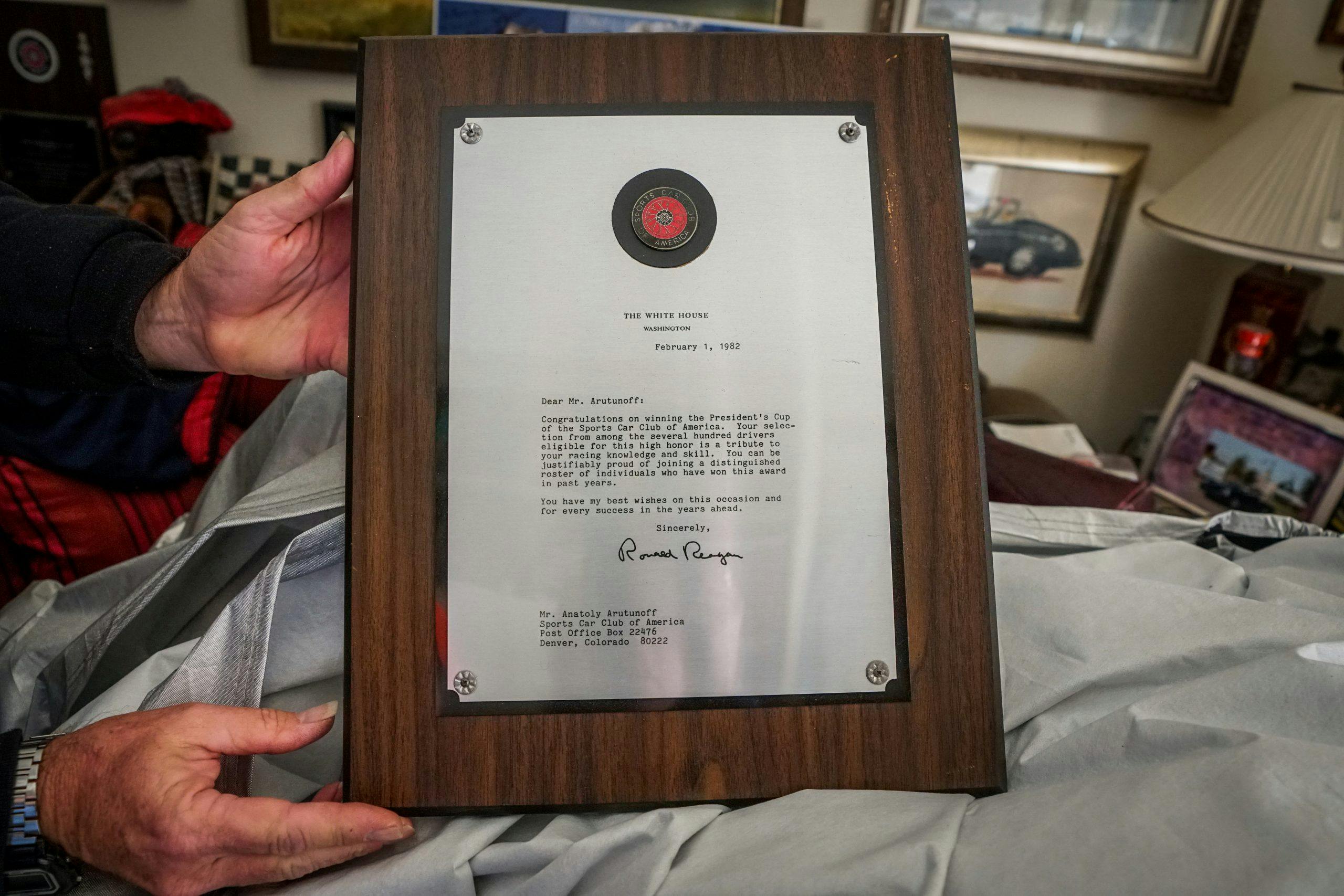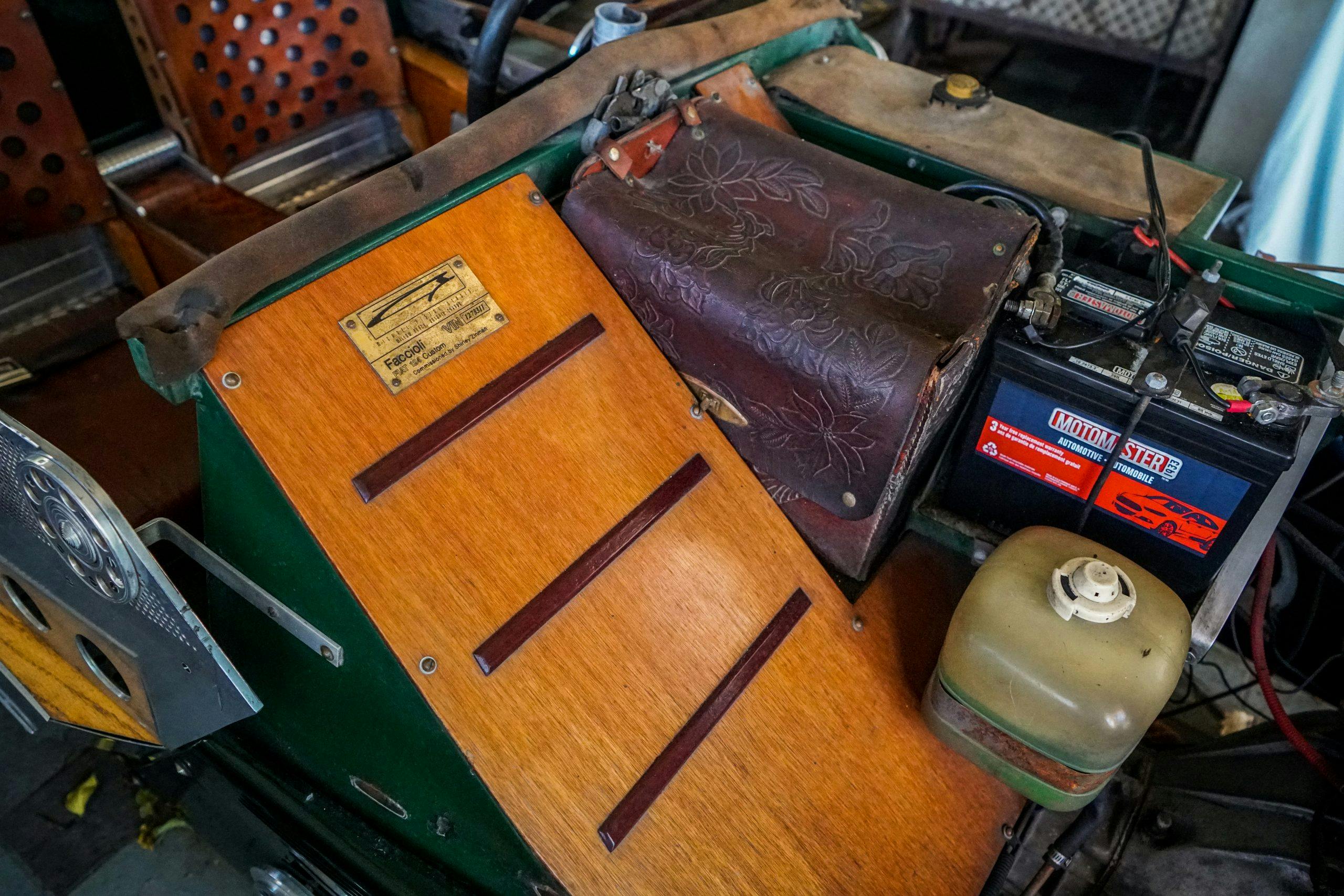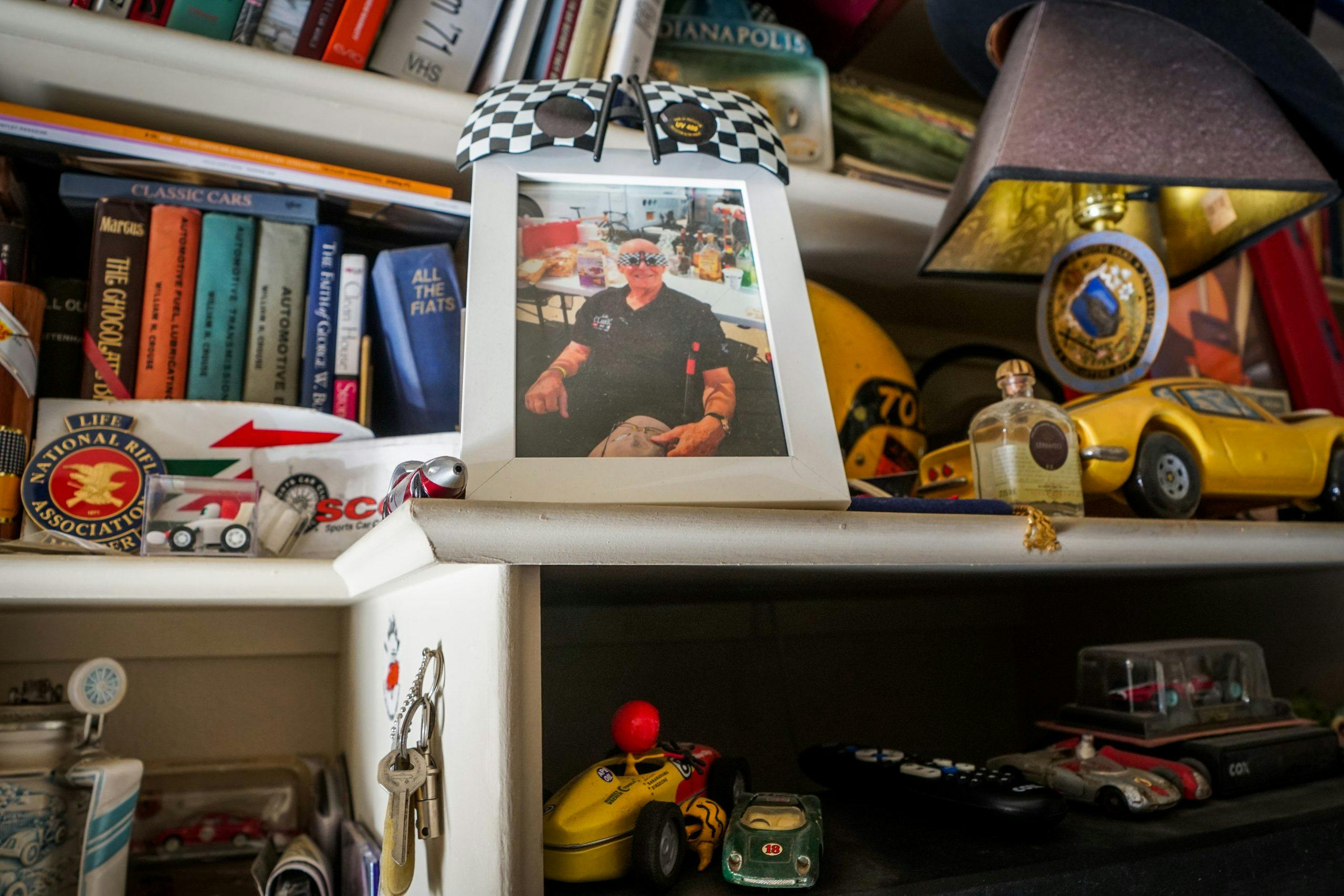Media | Articles
Driving a race track backwards? In a Qvale? With one leg? That’s Toly Arutunoff
Under Oklahoma’s best blue November sky, the butter-yellow Qvale Mangusta rumbles down a dusty access road, across the leaf-strewn paddock of Hallett Motor Racing Circuit, and onto the front straight. His cane stashed behind the driver’s seat, 82-year-old Anatoly Arutunoff points out that we are going the wrong way—backward, against normal race traffic. This isn’t a problem, he says, as he designed the track to be run in both directions. More to the point, on a quiet Tuesday afternoon, we’re the only people here—or so we think. As we’re driving back across the paddock, some time later, I spot a concerned-looking groundskeeper in a front-end-loader.
Aruntunoff noses the car towards him. “He’s gonna think I’m crazy.”
Funded by a family oil fortune, Arutunoff filled his life and passport racing in amateur series all over the globe. He sat on SCCA grids in the 1960s and 1970s, the golden age of sports-car racing. He ran the Cannonball Baker Sea-to-Shining-Sea Memorial Trophy Dash—the famously illegal 1970s cross-country race that birthed two Burt Reynolds movies—not once but twice, declaring it “a day and a half of paranoia bracketed by great parties at each end.” He tackled both the Pikes Peak hill climb and the very first One Lap of America. His multiple stints at Italy’s infamous Targa Florio included the final FIA-sanctioned race in 1973, flat-out through Sicilian mountains, and the event’s first running for vintage cars, a tamer event years later.
As Arutunoff tells it, however, this much-worshipped period of automotive history comes across like the four-wheeled equivalent of Coachella. He has written a pair of books on his life, and the pages of those books are packed with famous men who got their start in the college years of the SCCA while raising hell, drinking champagne, meeting beautiful women, stumbling upon tiny French cafes, and fixing distributor caps with springs borrowed from ballpoint pens.
The whole production ran on old money and sounds equal parts hard on your liver and shockingly unprofessional. In his first book, One Off: The Roads, The Races, The Automobiles of Toly Arutunoff, between sections named “The Fairer Sex: The Shine on the Glaze on the Cherry on the Frosting on the Cake” and “Racing in Europe: Thank You God!”, Arutunoff recounts American road racing:
Marketplace
Buy and sell classics with confidence
In early March of ’64, Jesse Coleman, Sebring’s longtime chief starter and SCCA official darn near everywhere, phoned me. “You still got that dinky-ass rollbar in your Studebaker that you took out of your Corvair?” he growled. I replied in the affirmative and he made me a wonderful offer. “Bring that thing down to Sebring and enter it in the two-hour sedan race.” Didn’t have to ask me twice …
The race went okay. I finished and the car ran fine all the way back to Oklahoma … Augie [Pabst] lapped me once, drinking a Coke, smiling and waving. I beat Dan Gurney’s Lotus Cortina. One of his wheels fell off. I think Jimmy Clark, in the other Cortina, lapped me when I did a splash-and-go fuel stop.
The FIA made some special rules for airport circuits after this race, because the Cortinas, to keep their speed up, would swing way wide approaching the 90-degree right turn between the two mile-long straights and make a great arc on the outside of the circuit itself, rejoining about a third of the way down the straight behind the pits, never lifting. If I’d realized it was FIA-legal at the time, I’d have done it, too.
***
Arutunoff has not raced in years, partly because he now sports an above-the-knee prosthetic on one leg. On February 8, 2011, caught in a snowstorm while headed to an SCCA convention in Las Vegas, he stopped to help a stranded motorist on the interstate outside Amarillo, Texas. A passing car lost control and side-swiped the pair, injuring Arutunoff’s right leg. By the time help arrived, frostbite had taken the limb.
At his house in Tulsa, Arutunoff comes to the door in a baby blue cashmere sweater with a small hole at its hem. A golden silk scarf is loosely tied around his neck and tucked neatly into his collar. His head is covered by flat-billed baseball cap with the word ACID scrawled across the front in neon orange. His mechanic, a soft-spoken, 63-year-old man named Jon, walks with us toward the garage.
Arutunoff waves his cane at a canvas-draped shape in the driveway. “What’s that, again?”
“That’s the other Mangusta,” Jon reminds him.
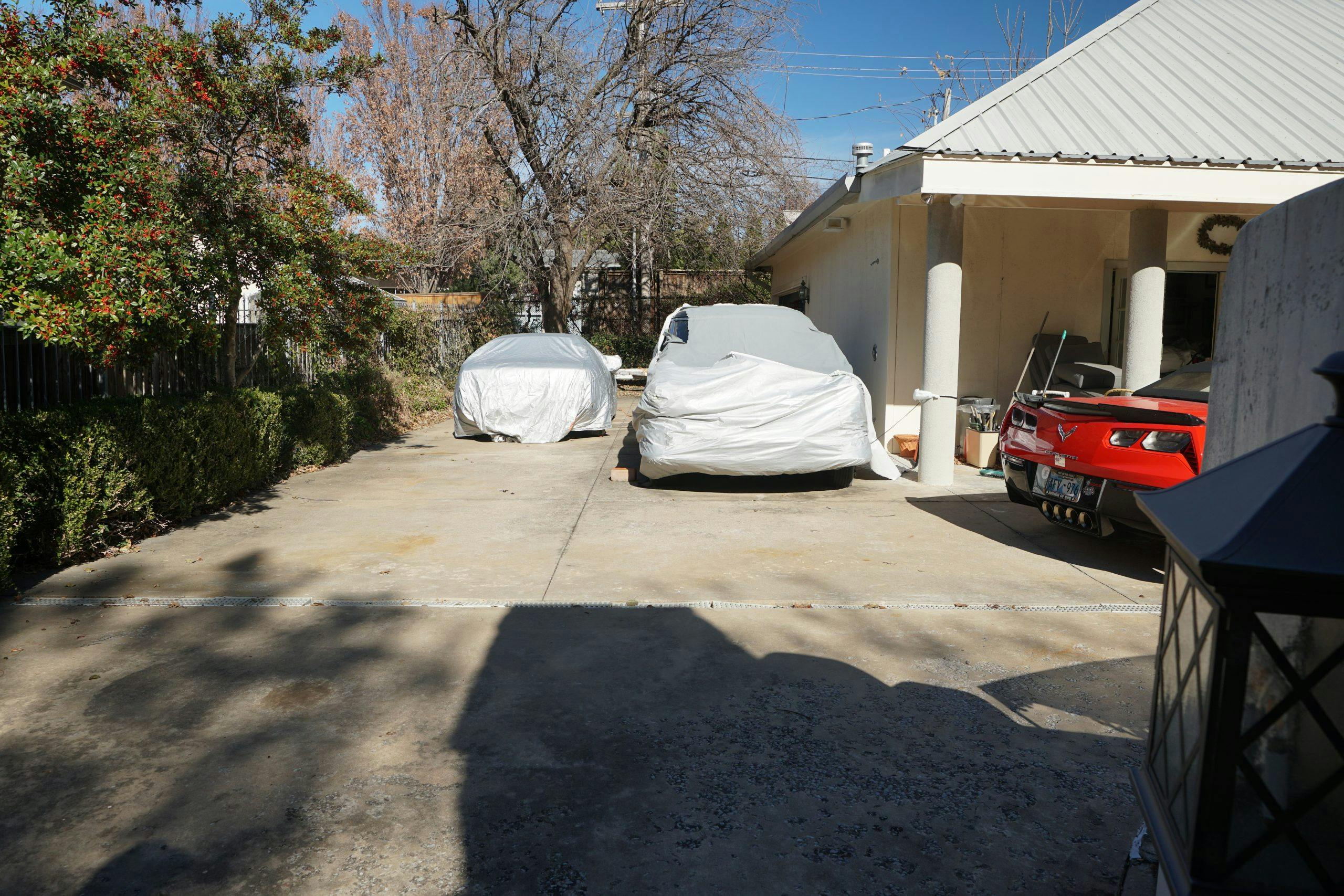
Arutunoff meanders past another covered car, then around the pool that separates his palatial house from the detached garage. He opens the garage’s side door, and I follow into a time-warp smorgasbord: dust-covered champagne bottles, Targa Florio scarves, bookcases, a crowded and wall-length trophy case. Modern motorcycles, vintage bicycles. An object said to be the last extant World War II-era copper dye vat. A wall hanging of a Morgan sports car rendered entirely in carpet. Behind all of this, on the wall, hang six personalized Oklahoma license plates: OH GEE, OH GOSH, OH WOW, OH MY, WHAT HO, TEDIBLY.
“Where is the letter from Ferrari?” He asks.
Arutunoff owned the first Ferrari dealership in Oklahoma, though he eventually sold it—a silly decision, he says. “I was the first person to be offered an [old] Formula 1 car by the factory. They used to chop ’em up and throw ’em away, because some Italian would buy one and blow it up and disgrace ’em. In whatever year it was—mid ’70s?—I got offered the car for $40,000. They didn’t want it demonstrated, driven … I couldn’t even fit in it. And we were currently in a big fight, because I brought in a 365 BB, which was illegal [then] … so, that’s why I didn’t want to get another Ferrari … Anyway, the letter they wrote me, I have framed in black around here somewhere, offering me the car.”
Jon interjects. “It was 1975, it was the 1974 Formula 1 car that I believe Niki Lauda had driven.” The words are absent drama or pretense, spoken like that one older groom in the stable who knows all the horses.
“Oh, well, what a shame.” Arutunoff’s roll does not slow. “Anyways, Charles Lucas, when his wife divorced him and married one of the Oppenheimers, you know, the diamond people? They have a small jet, besides their one or two big jets, and the small one’s to bring the dogs. I mean, as long as you got money, why not?
“So we were having this lovely dinner, and they thought I was going to be in a wheelchair, and everyone was very pleased, and there were a whole bunch of really neat people whose names I’ve forgotten and Karen said—it was just wonderful—the sommelier came around and said, Madam, what kind of wine would you care to drink? And she said, Well, what do you have? And he said”—Arutunoff drops his voice for dramatic effect—“Madam, everything.”
He laughs wheezily for a moment. The story continues, though not obviously on the same plane.
“Anyway. My godson was saying, I was in the kitchen with a cigarette, and Mom said, Don’t put your cigarette in the table, that cost £40,000. It was a table in the kitchen. Spend it! Why not? Let’s see, what else …”
Arutunoff rotates cautiously on the garage’s slick floor, surrounded by cardboard boxes. “Oh, that’s an Appia Zagato.”
The cars are always spoken of like this, casually, the dozens he’s owned rarely identified by their impressive accolades. Arutunoff will instead rattle off an order sheet—engine configuration, transmission, rear-end ratio—and the various modifications he made. His ’62 Studebaker Hawk sported a 5-psi McCulloch centrifugal supercharger. The Ferrari SWB he ordered had the available alloy body and went racing, and so on.
Two Zagato-bodied beauties—a baby-blue Lancia Appia and a wine-colored Bristol—rest shoulder-to-shoulder by the garage’s two-car-wide door. The Bristol is shorn of rear wheels and atop jack stands. The Appia wears a scrapbook of stickers across each fender: Circuit de Lédenon (France); Lane Motor Museum (Nashville, Tennessee); Automobile Club d’Italia; Alpine Rally Association; Ristorante Nino Corsaro, located in the shadow of Europe’s highest active volcano; Giro di Sicilia, a retracing of the Targa Florio managed by a car club that refused to abandon the course after the FIA struck it from the international calendar.
“I love it, Karen thinks it’s incredibly homely … I’ve run it at Pittsburgh oh, four times maybe, and Laguna Seca maybe three or four times. Roll bar comes out in about 20 minutes without having to take the seats out, but it’s original and … doodle-doo … I don’t know what those head gaskets are for …”
Arutunoff is the only member of his family to have so deeply invested in car racing. His father, Armais, the son of an Armenian soapmaker, emigrated from Russia to the United States in 1923 following the Russian Revolution. Armais brought with him both his family and a new design for a submersible electric oil pump. The Arutunoffs landed in Los Angeles, then Michigan, and finally oil-rich Bartlesville, Oklahoma, 45 minutes north of Tulsa. Backed by Phillips Petroleum Company, Armais began to manufacture his pump (U.S. Patent no. 1,610,726). By 1938, the Russian Electrical Dynamo of Arutunoff (REDA) Pump Company was lifting an estimated two percent of all U.S. oil.

Anatoly was the youngest of three. His older brother graduated from Black Fox Military Academy in Hollywood, California, and served in the South Pacific during World War II before becoming REDA’s executive vice president. His sister, Anait, established a career in sculpture before immersing herself in the world of holographic art and building her own laser laboratory. Toly graduated from high school at 15, earned a master’s in English literature, and went racing. Neither he nor his wife Karen, whom he married after turning 59, have worked a day in their lives.
Arutunoff points at a spot on the wall, above a cluttered workbench. “That’s out of the championship Morgan.” A thickly grained wooden dash hangs off a shelf below a faded poster of Paul Newman. A Morgan does lurk in the garage, just across from the player piano, but its gauges don’t match the dash on the wall. That plank lived in the H-Production Morgan 4/4 race car that Arutunoff drove to a rainy victory in the 1981 SCCA Runoffs. Behind me, that sodden, checkered-flag moment is frozen in a faded color photo on the garage fridge.
You do not win an SCCA title without talent, and in 1963, Arutunoff was given the chance to go pro. At a hotel bar in Le Mans, Count Giovanni “Johnny” Lurani, Mille Miglia and Le Mans winner, offered Arutunoff a seat in the Monza Formula Junior Grand Prix. Arutunoff had the money, the family approval, and the inclination. Instead, he lied: “Geez, thanks, but I promised Dad I’d be home in July to learn more about the family business.” To this day, as he writes, he’s not sure why:
Talk about the sin of pride masquerading as modesty! Talk about being a drooling idiot. Maybe I was scared at the thought of being up on that Monza banking in the middle of a pack of Chianti-dosed Nuvolari wannabes in open-wheeled cars. Who knows? I wake up kicking myself and screaming every few months when I remember this scene, but the attacks do come less frequently with age.

In the garage, the tales keep rolling. “I sold [the SCCA Morgan] to Duncan Charleston five or six years ago.” Charleston, it turns out, discovered a problem with the car’s ash frame—Arutunoff admits the Morgan had been crashed—and ordered another from England only to find, unhappily, that the reproduction was three-eighths of an inch off.
“It’s got, like, 80 rear-wheel horsepower, how much of a frame do you need? We think he just wanted to be the owner of the car. He’s probably not going to drive it anywhere. I don’t care, it’s his car now! Lemme see now … oh my gosh, Paul Newman poster … You know who one of my heroes is? That Glickenhaus fellow. He makes race cars that are streetable.”

Stories lead into other stories, and we eventually reach the end of the garage. The two men stroll back onto the driveway, past a red 2016 Corvette Z06 convertible. Arutunoff once wrestled a ’60s big-block Corvette around the pedestrian-infested roads and sheer cliffs of Sicily, but he claims the 650-horse modern car holds no magic. “I had that thing wide open for 15 seconds once, and that was enough. Terrifying.”
The sole common thread seems to be a fascination with elegance and eccentricity. On the other side of the pool, in a carport off the main house, lives a one-of-four bespoke creation by Romanian sculptor Michel Pistol. It is based on a Fiat 124, boasts a Chevette steering box and the suspension from a Willys, and the driver’s door goes up and down “like a guillotine,” Arutunoff says. (“The passenger side doesn’t open at all. I got stuck in it once.”) The car was once shown at the Quail, one of America’s most prestigious concours; the plaque from the event sits in a corner of the garage, atop a stack of cardboard boxes, evidently forgotten.
Arutunoff doesn’t mention the honor. He pulls a photo from his wallet, displaying another one of Pistol’s four cars, a low-slung, green-and-silver two-seater with a cross-eyed face like a flounder. When he does address Monterey’s golf greens, it’s to praise yet another car he doesn’t own: The winner of an award invented by well-known oddball-car collector Myron Vernis a decade ago for “cheapest ticket on the field”—a belly-tank racer powered by a Ford flathead.
“Know how much that owner had in the build?” Arutunoff asks. “$16,500.” He laughs.
***
The visit to Hallett was Arutunoff’s decision; after the house and garage, he simply decided that a short road trip to the circuit was a necessary part of my one-day visit. Arutunoff designed and built the track in 1977, then put it up for sale in ’83. His 591-hp Audi RS7 is parked in front of the house, but Arutunoff instead hops into one of his two Qvale Mangustas. The car’s oddly proportioned face and rear wheel openings suggest an Aston Martin through a kaleidoscope darkly, but Arutunoff is proud: “No spoilers, no nothing. My wife says it’s the best $17,000 car in the Central Time Zone.”
Rush Limbaugh’s gravelly voice grinds through the Mangusta’s speakers as we slowly make our way across town. At a stoplight, as we wait to turn left I ask about bucket lists. “A list of stuff I’d like to do?” he says. “Well, thank you Lord, it never occurred to me. I’ve done a lot of things and had a lot of fun. Come on, get in the—you’re going to sit through this light? I’ll creep up on him, try and nudge him … aw, come on, dad!”
The Qvale spurts through the yellow light, away from the offending car. “Sorry,” Arutunoff says. “I should calm down.”
Outside of Tusla, on U.S. 412, Arutunoff drives through a toll booth. Immediately after, having missed his exit, he brings the car to a halt in the rightmost lane and throws the little yellow car in reverse. I must look alarmed, because he assures me—all while deftly maneuvering his able left leg over his prosthetic right one and onto the gas—“Don’t worry, I’m in here too. I’m not going to get us killed.”
In pit lane, having just made the slightly unnerving comment that Hallett is busy “all the time,” Arutunoff notes that he has been in touch with the facility’s current owner. “I told her I’d be visiting,” he says. He drives onto the circuit, honking the horn several times for good measure. “I’ll be really proper and turn my blinker on.”
As with the garage, the track tour is a rolling narrative, stories sparked by bits of pavement or land. Arutunoff still talks like a racer, still remembers the camber here or there, why he did this or that when the facility was built. “I just had a guy come out here with a bulldozer,” he says. “Skip Barber, when he had his [racing] school here the first couple years, he said, ‘This is my favorite track to teach, ’cause there’s not a normal corner on it. If you can race well here, you can do well anywhere.’”
He laps the track in reverse at maybe 40 mph. We drive past the dried-up sewage lagoon (“Loch Mess”), as well as “Lenny Pond,” the site of a long-gone tree and a corresponding tire wall. “A family of scorpions used to live over here. I used to wonder, you know, scorpions have claws. I wonder if a scorpion’s claw’s good as a crab claw? Put ’em in a spoon of melted butter, they might be great! Not about do to it, but …”
Arutunoff is obviously at home here, can still name every corner and justify every tire barrier. He talks about the track the way you would speak of a house you once lived in, as if, Of course you would build yourself a road course, if you could, wouldn’t you? Who wouldn’t, really? As he wrote:
I’ve said it in public and I’ll say it again here: All the car stuff I’ve done is a sort of cross-section of what you would have done, if you’d been young in the Sixties and had the money. I had the money and the inclination to do more, but I didn’t. Puritanical streak maybe or, perhaps, puritanical racing stripe.
The tour ends, and Arutunoff offers me the wheel for the 45-minute drive back to Tulsa. As the Mangusta burbles onto the highway, the narrative careens from black holes to Jim Glickenhaus to the appearance of Armais Arutunoff in his son’s dreams. It is now the middle of the afternoon, but time has felt meaningless all day and lunch was somehow missed, so I point the Mangusta toward food. The track fades in the mirror.
Our quiet visit aside, Hallett remains vibrant, its schedule full. The place will likely far outlast its designer, as will the cars and those books. The Mangustas may someday reappear on Bring a Trailer, the bestickered Appia may travel back to the Lane Motor Museum for good, watched over by a black-and-white picture of its well-traveled driver—or perhaps the Lancia and the Bristol will reprise their glory days once more, at the historic Mille Miglia or the vintage races in Monterey. That is all right and good, if absent a key part of their appeal. Cars are dead-eyed without their stories, but the irony has always been that those stories are far less durable than the physical object, harder to preserve and rebuild, with less attention generally paid to their maintenance. Which makes sense, really; you have to work at that sort of thing.
By the time we reach the restaurant, it is three or maybe four o’clock. Toly chooses a table on the patio and pores over a Thunderbird parked nearby, trying to decide if the car is a ’54 or a ’55. After relaying a question via the waitress to the T-bird’s owner, he eyes the menu, thinking for a moment. Then he looks up and across the table at me, nonchalant, conspiratorial.
“Would you like some whiskey?”


